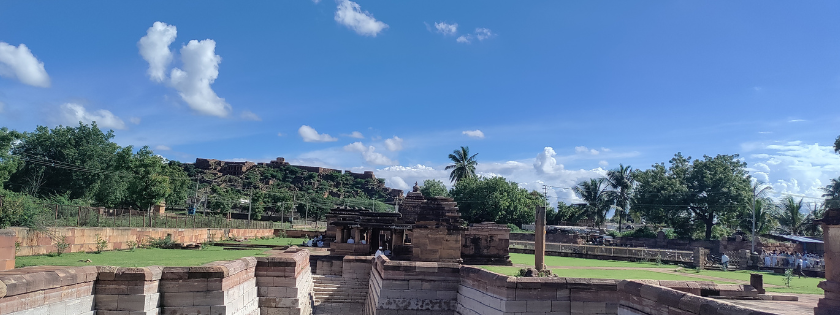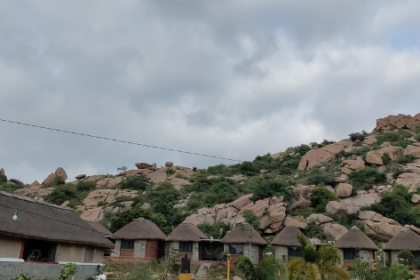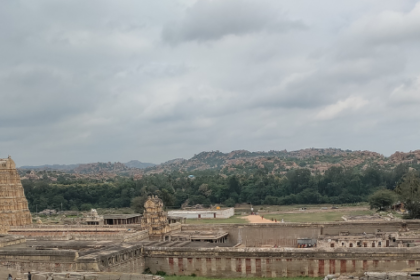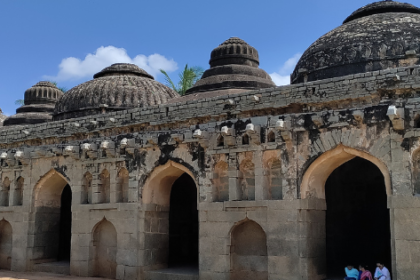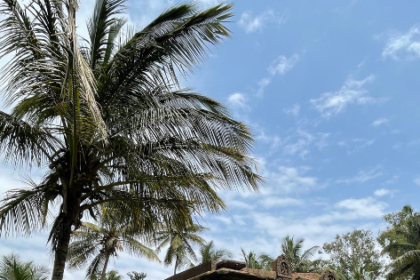To read the previous blog on Hampi Badami Day 1 click here
Day 2: Ancient Wonders of Badami and Aihole
The morning began with a visit to the Badami Caves, a breathtaking rock-cut wonder carved into red sandstone cliffs. These caves were a 10 minutes drive from our hotel. The road to the cave parking was through a slum and it was difficult to drive our car on those narrow lanes. There is a huge parking lot at the base of the caves. Washrooms are available. We purchased tickets from the ticket counter. The caves are not pet friendly. So we had to go one at a time and the other had to wait behind with our dog. We went early in the morning at 7am when the weather was pleasant. The caves offer beautiful views of the Agastya Lake.
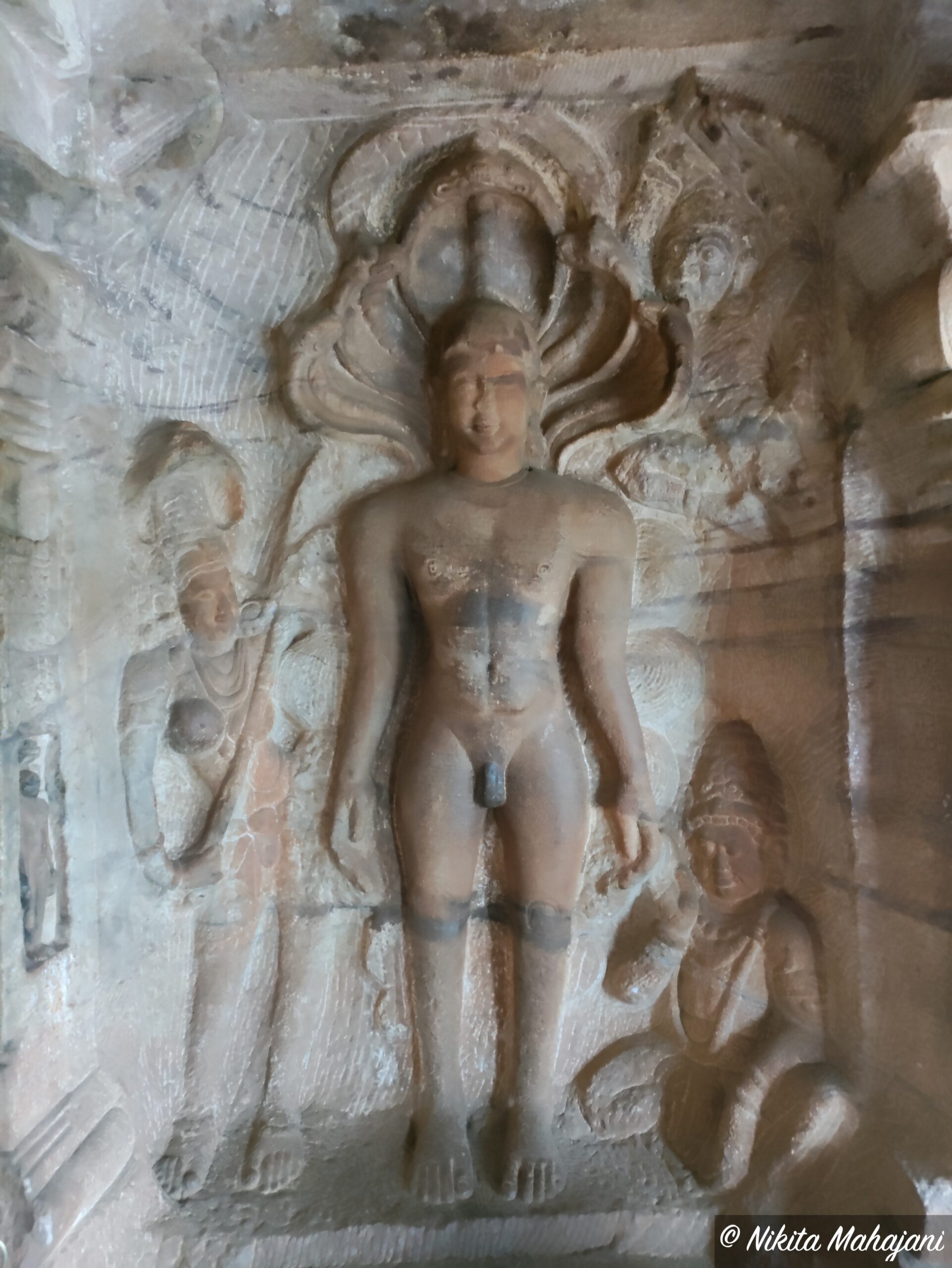
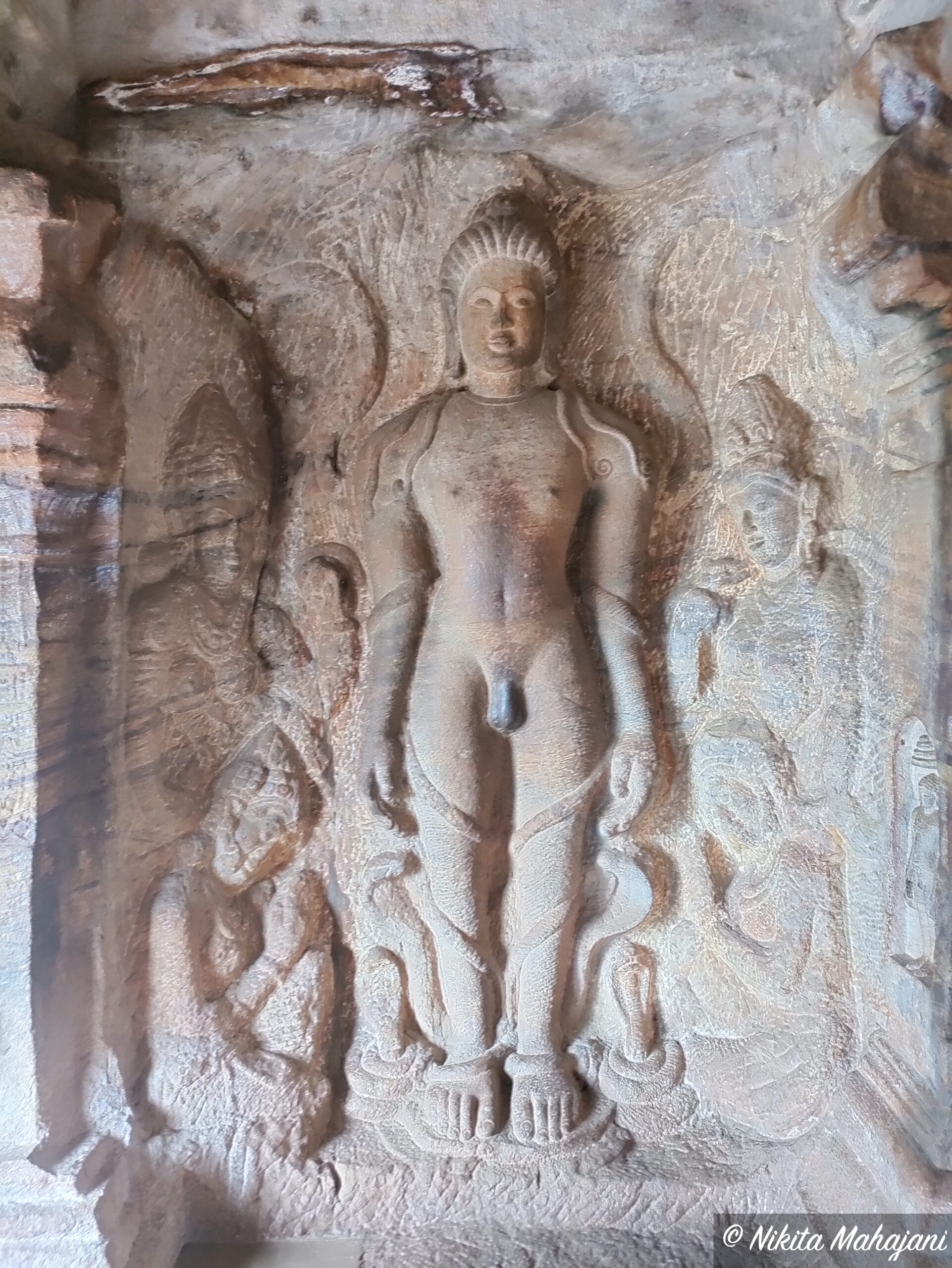
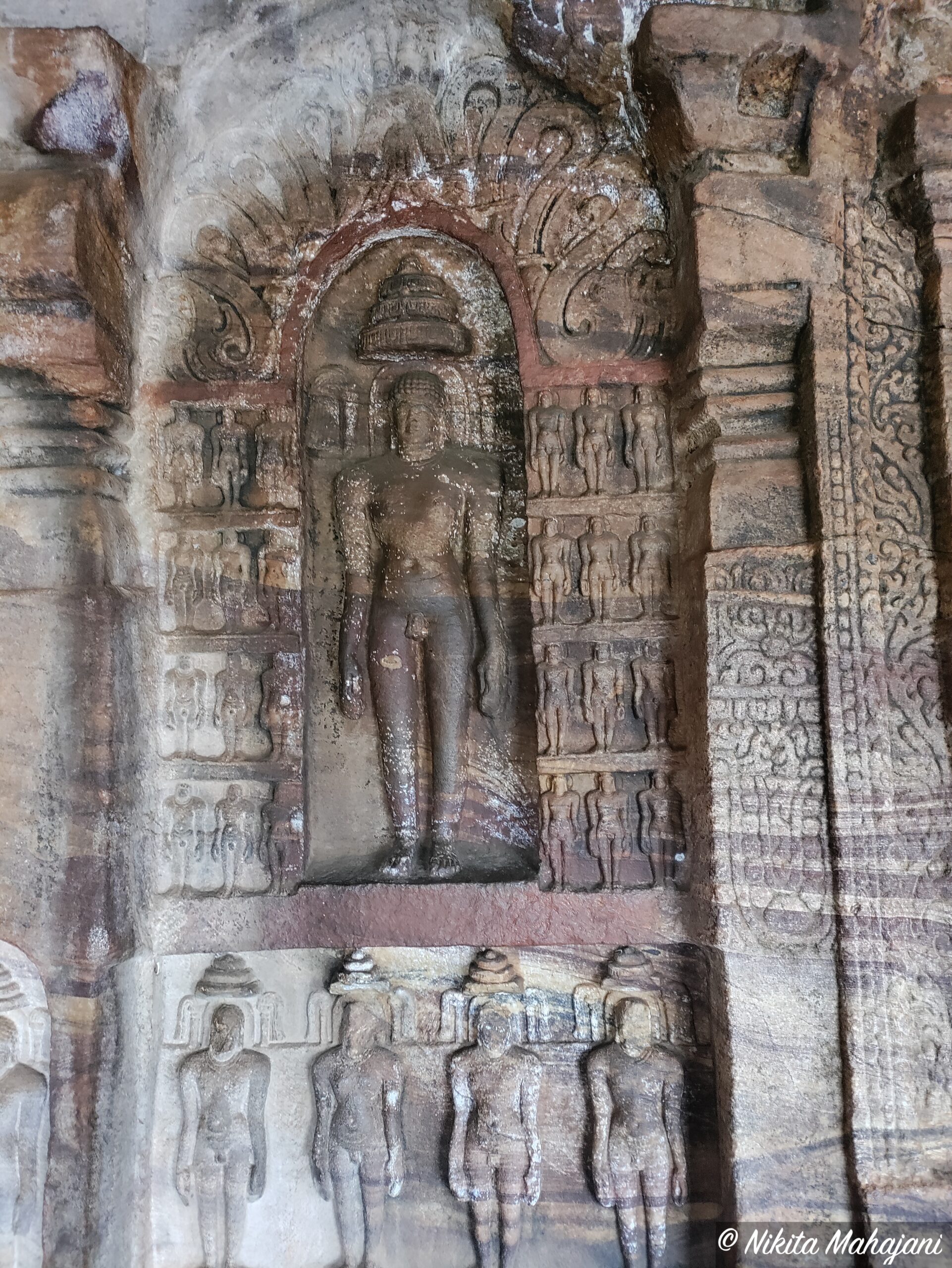
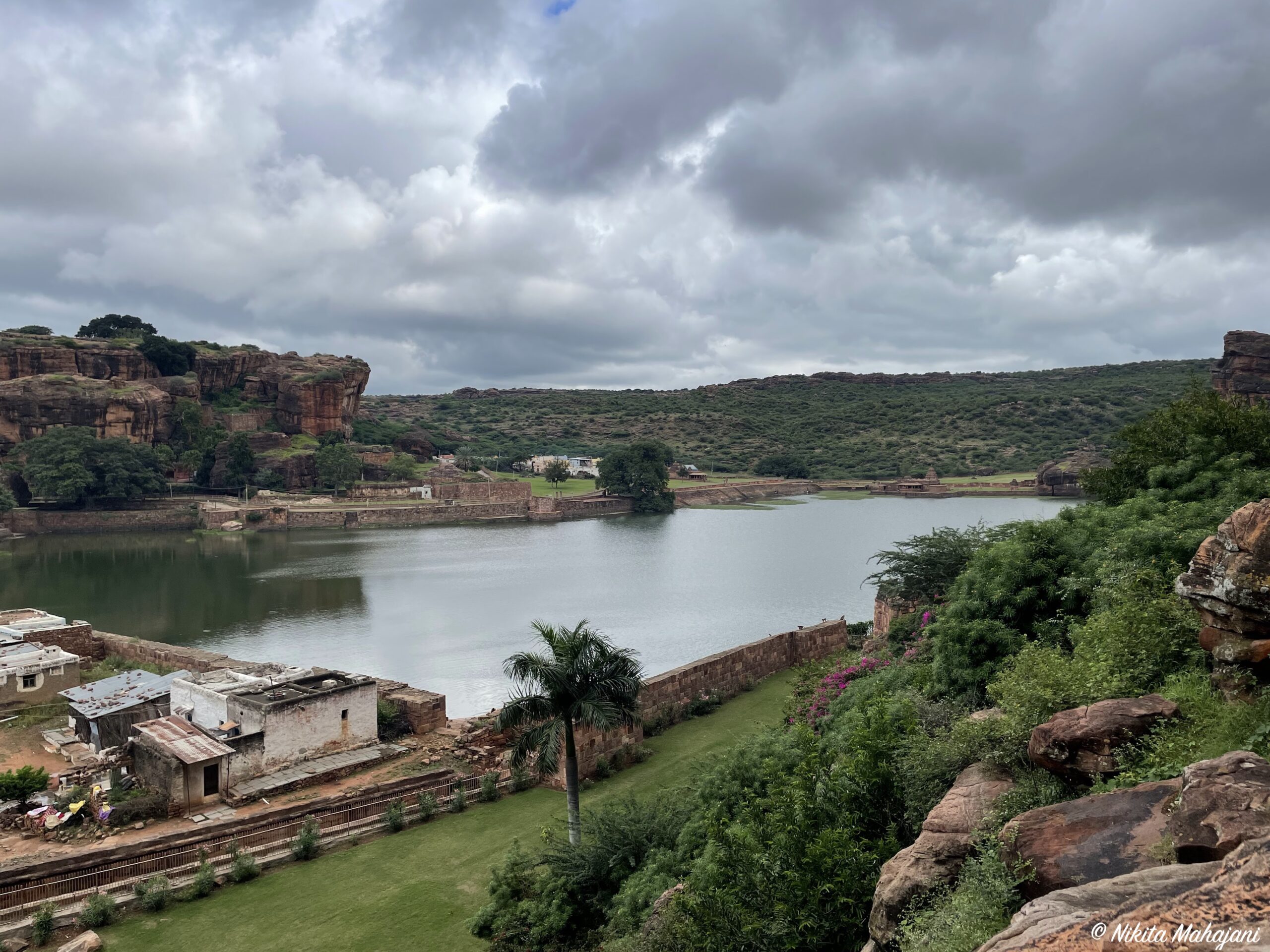
We spent an hour at the badami caves and started descending. We met some auto rickshaw drivers who offered us to take us to the temples around Agastya lake and Badami Fort in Rs.500. The auto Rickshaws in Badami are known as ‘Tuk tuk’ in local language. Inspite of having a car, we readily agreed to go by Tuk tuk since we had a tough time driving the car in the narrow lanes. This was Sophie’s first time in an auto rickshaw and she enjoyed it. He dropped us at the parking in between Agastya lake & Badami Fort. All the temples aroud Agastya lake are pet friendly. There is no entry fee and no gates. But beware of the monkeys. Sophie enjoyed the unleashed walk around Agastya lake. She has never seen this kind of a topography in Pune and her eyes were full of curiosity.
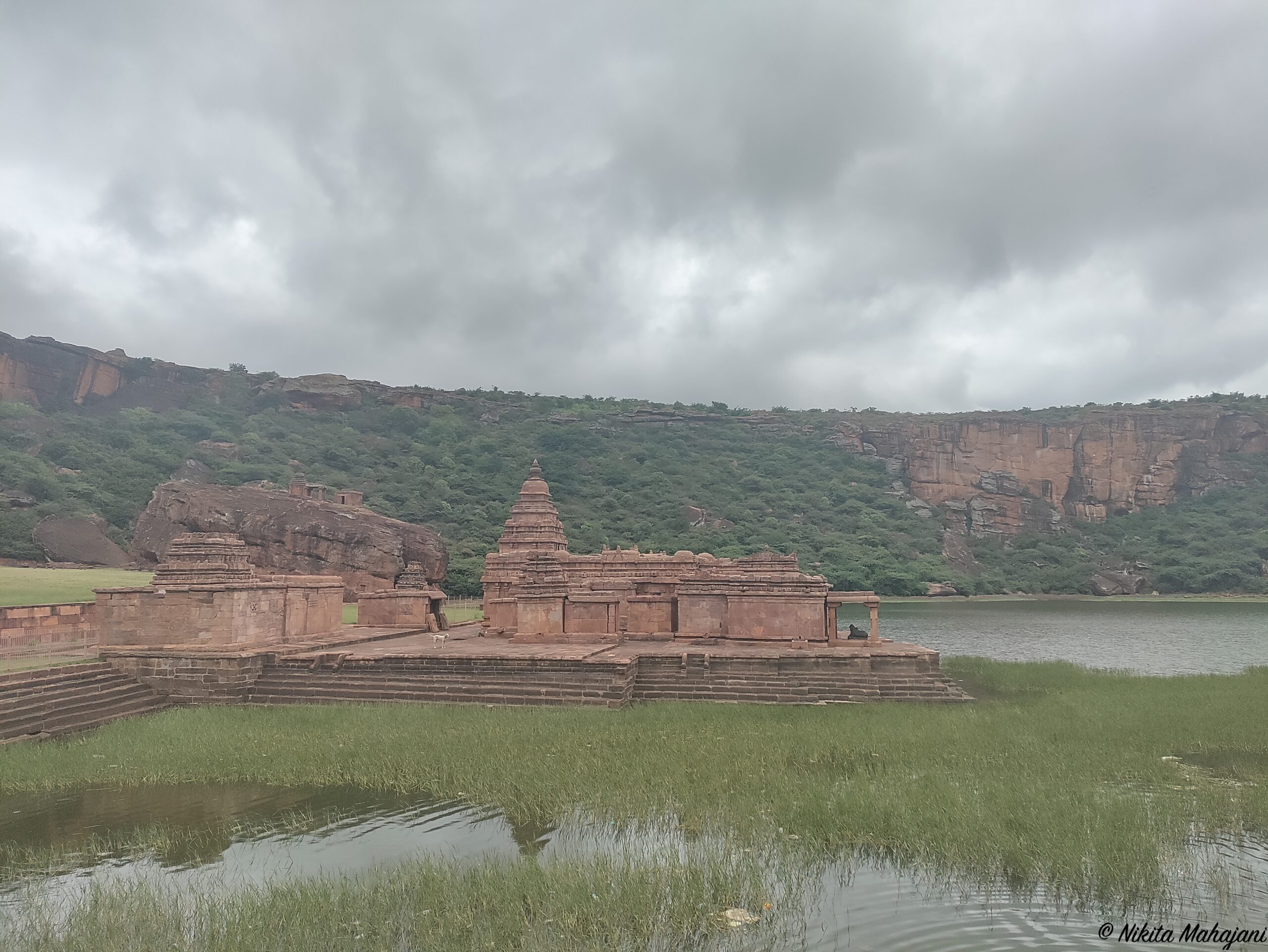
Sophie was as intrigued as we were by the intricate carvings and ancient statues. Next, we headed to the temples around Agastya Lake—the Sri Bhootanaatha Gudi, Sri Mallikarjuna Gudi, and Sri Vishnu Gudi—each steeped in history and filled with exquisite sculptures.
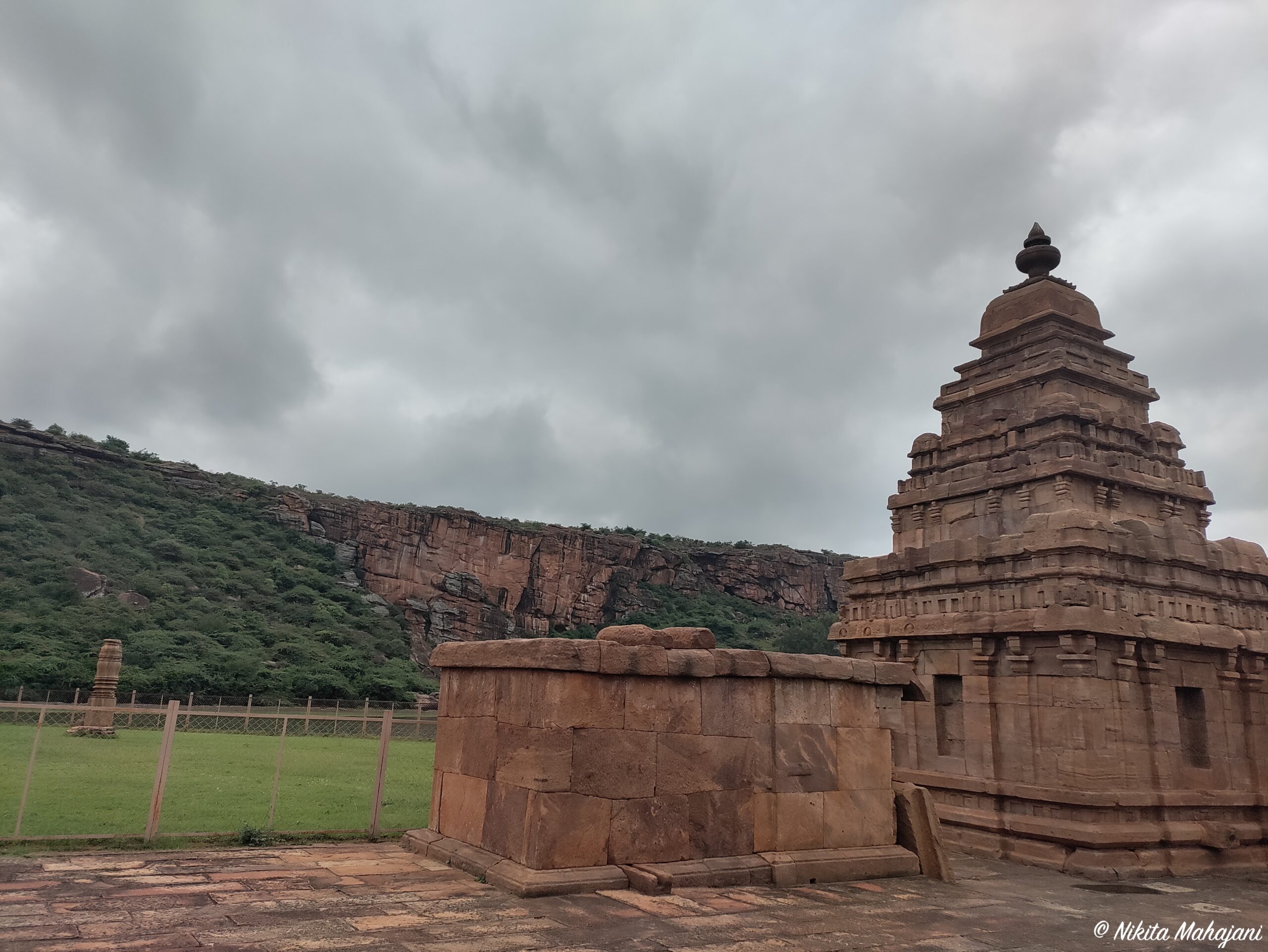
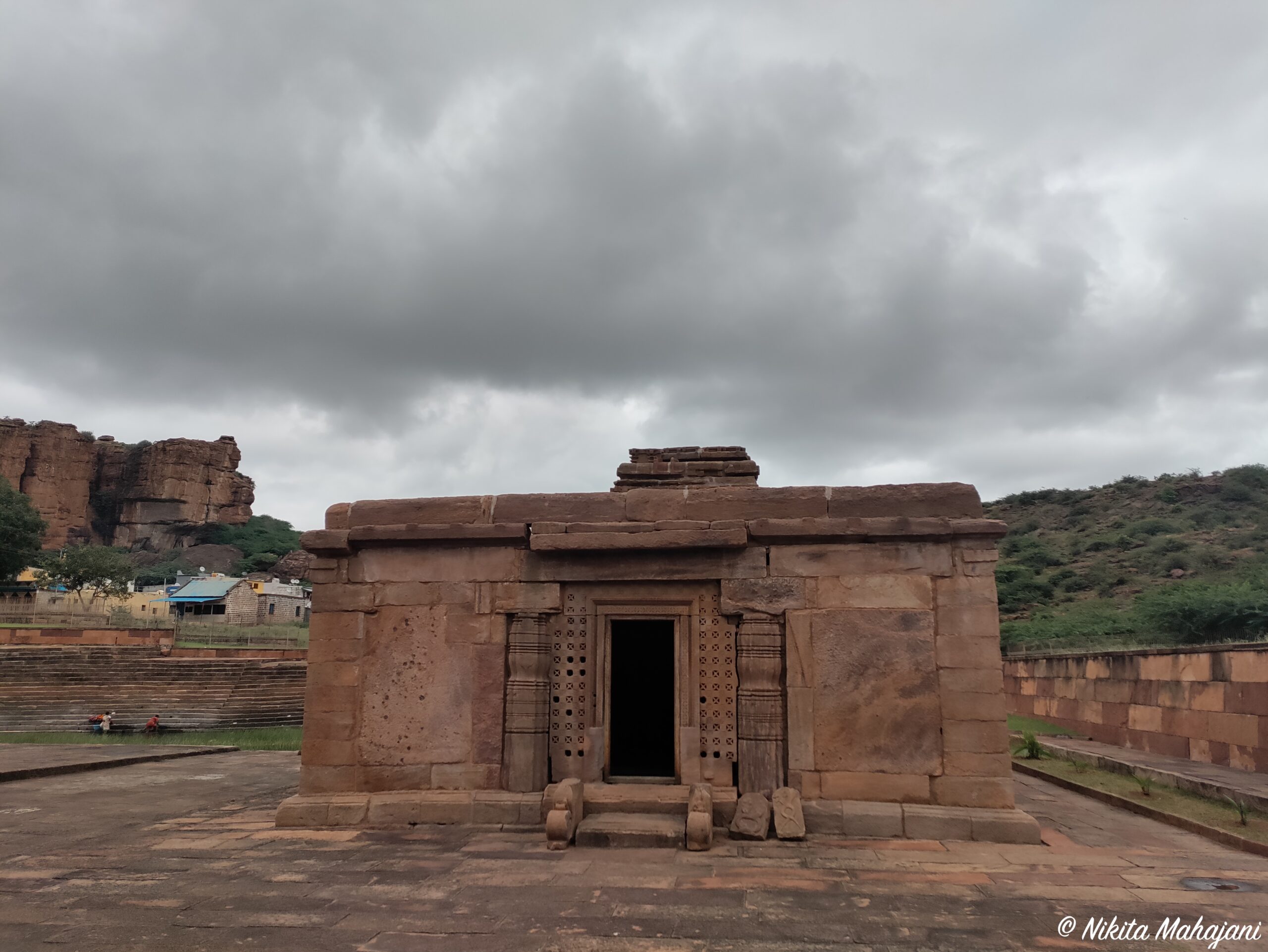
We came back to the parking. The Archaelogical museum was on the other side of the parking. Sophie waited outside, as we explored the museum one by one. This museum is the starting point of Badami Fort. Badami Fort is totally pet friendly. We explored the different gateways , upper Shivalay, lower Shivalay at the Badami Fort. It is not a trek as such. It is just a hillock with steps and ramps. There were no tourists on the fort apart from us.
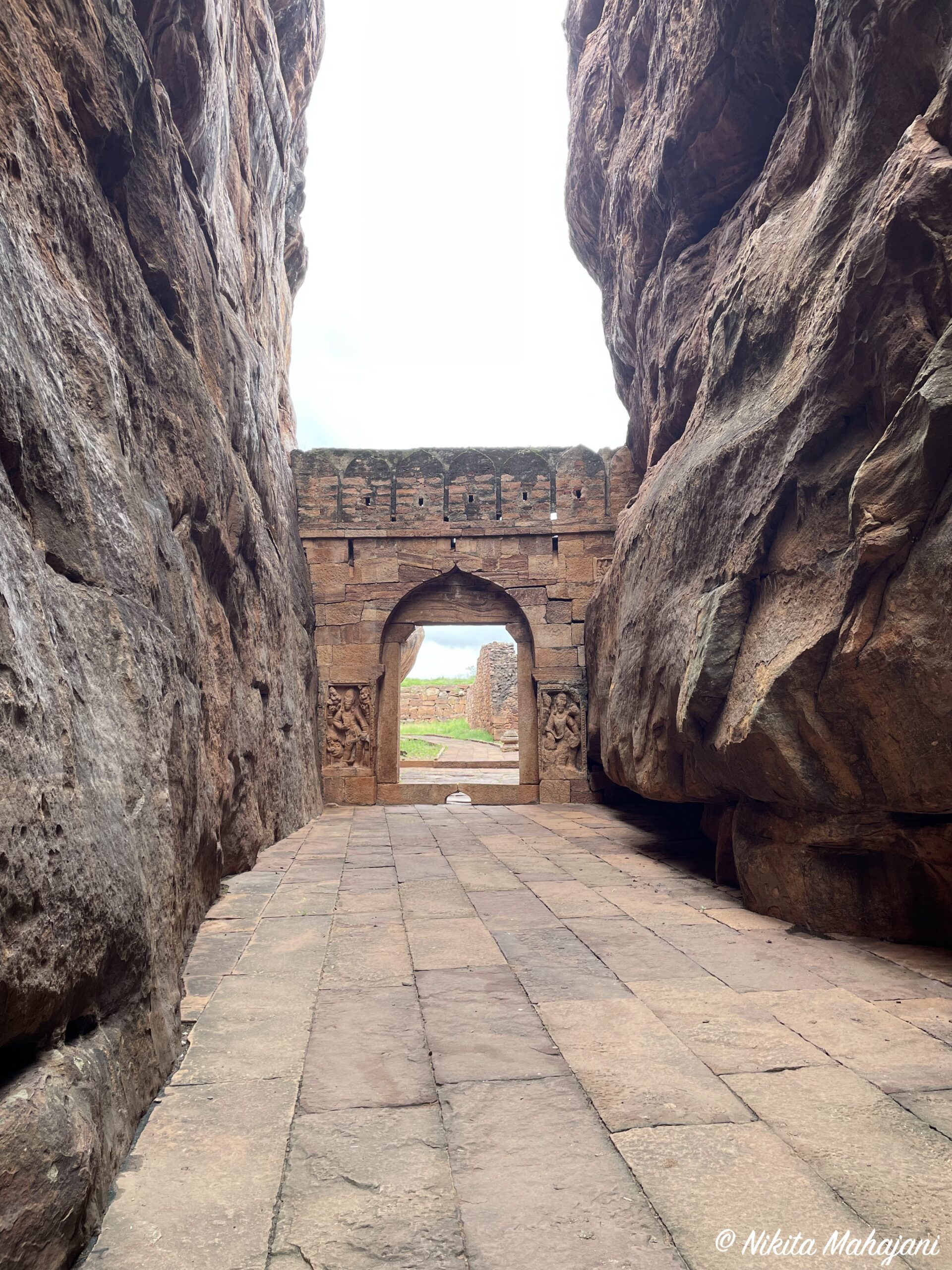
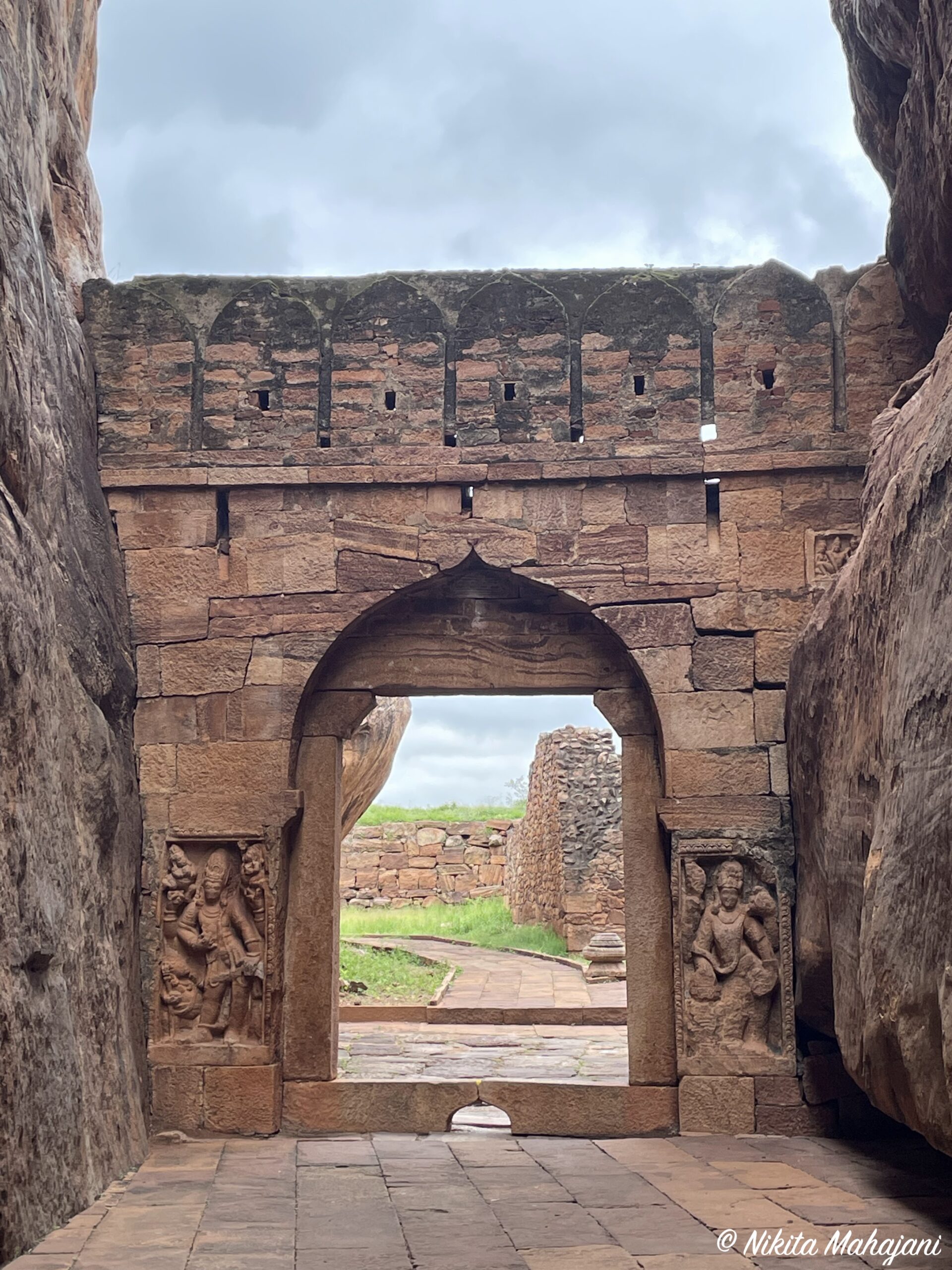
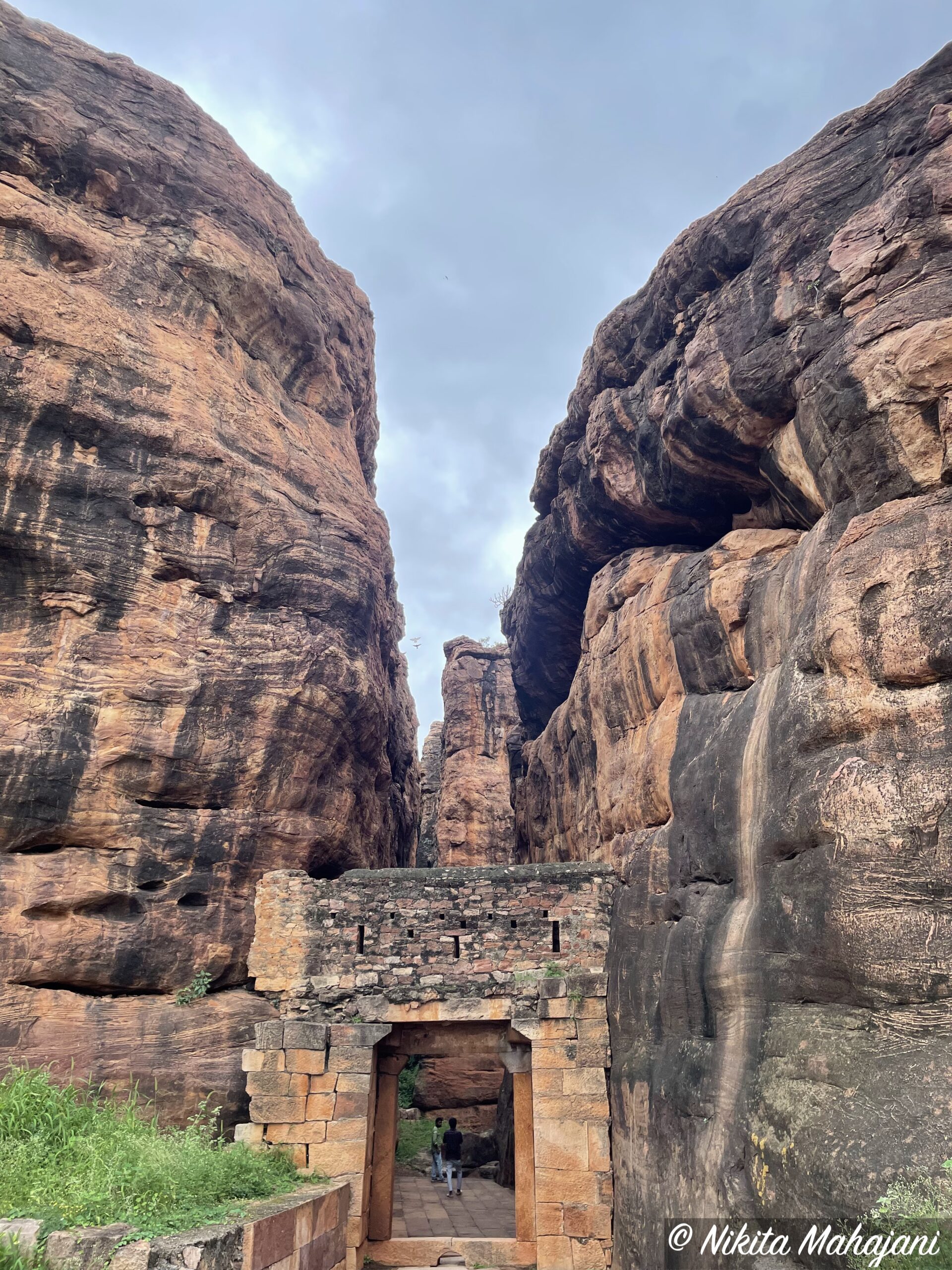
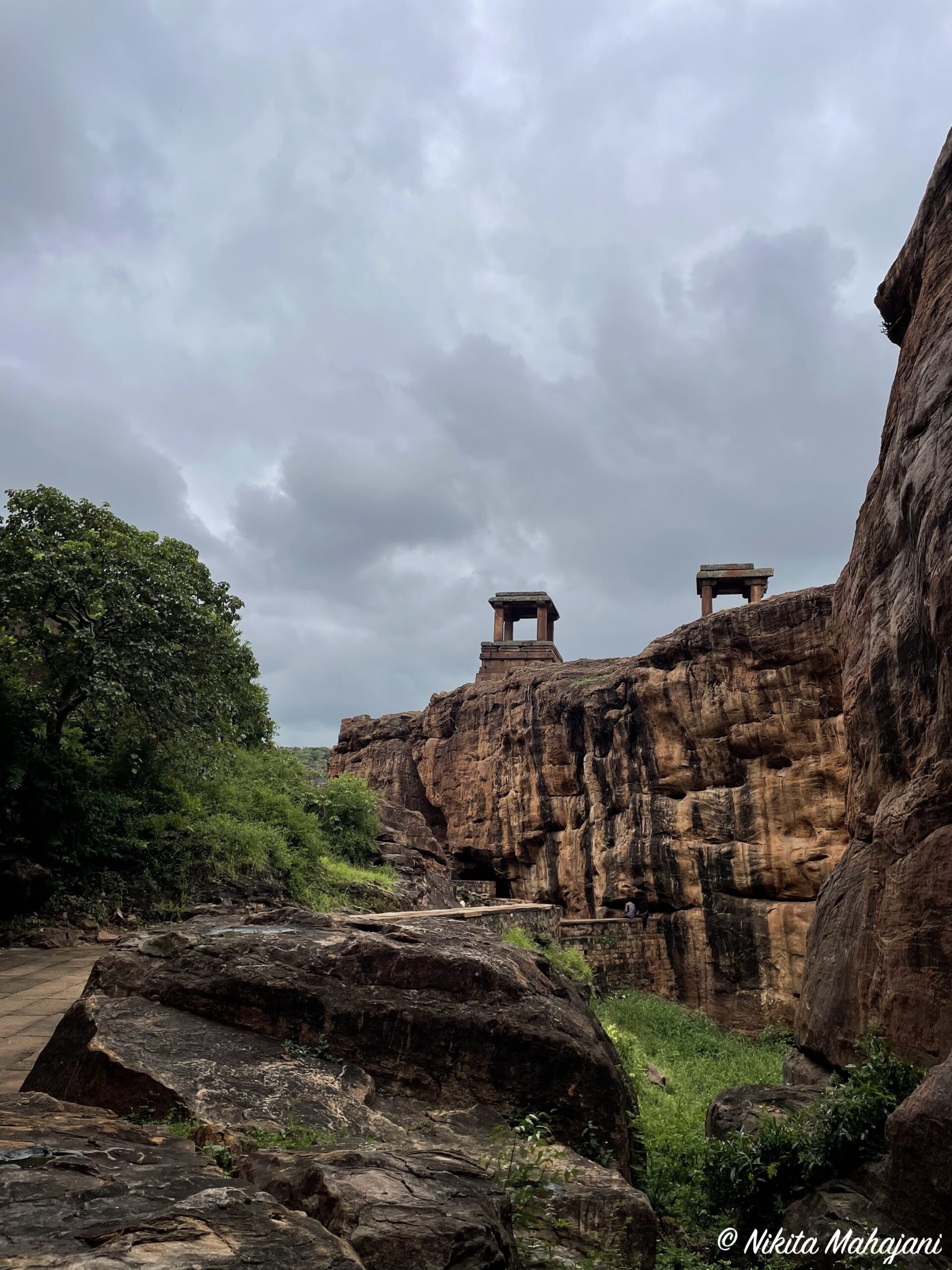
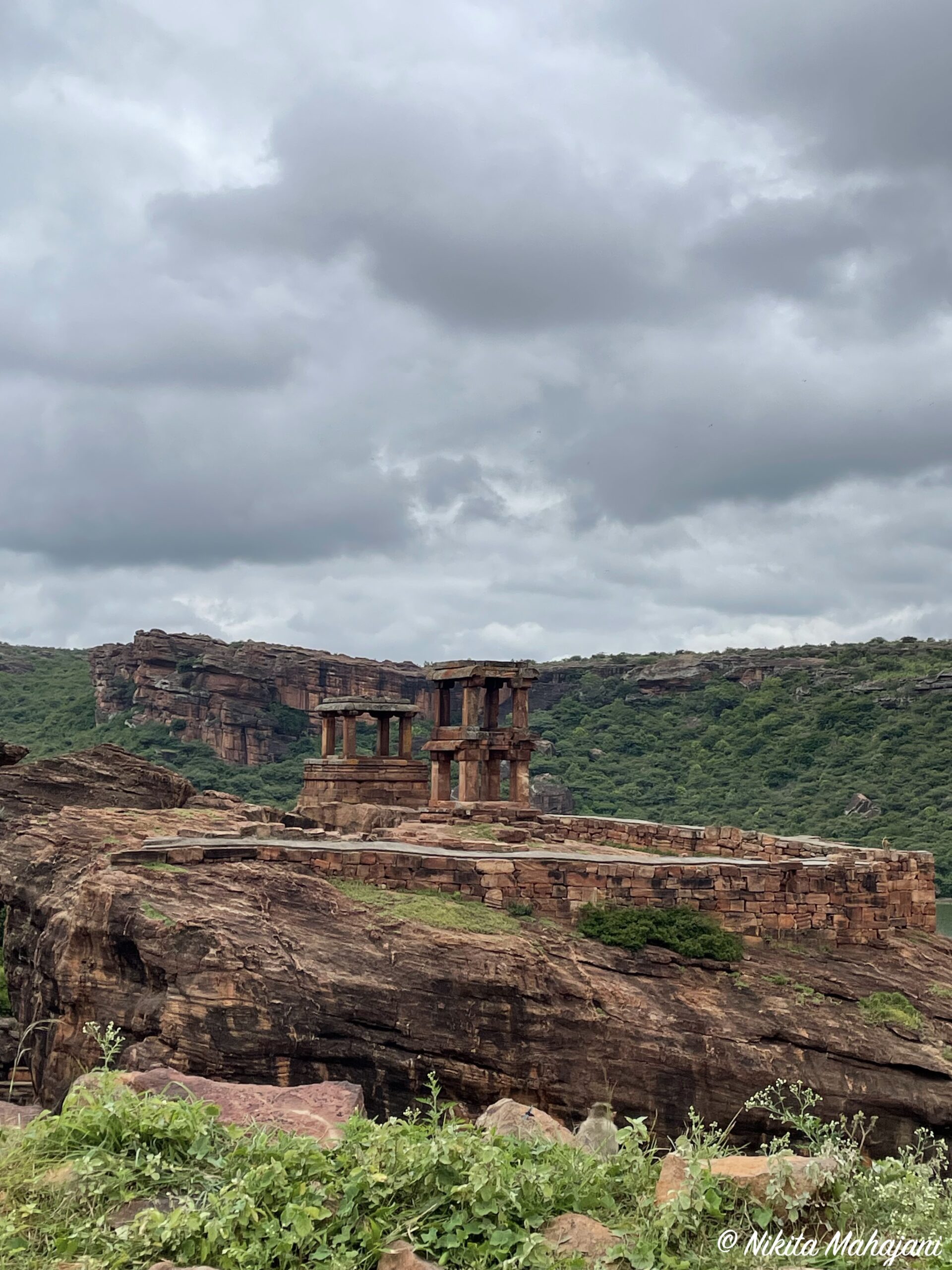
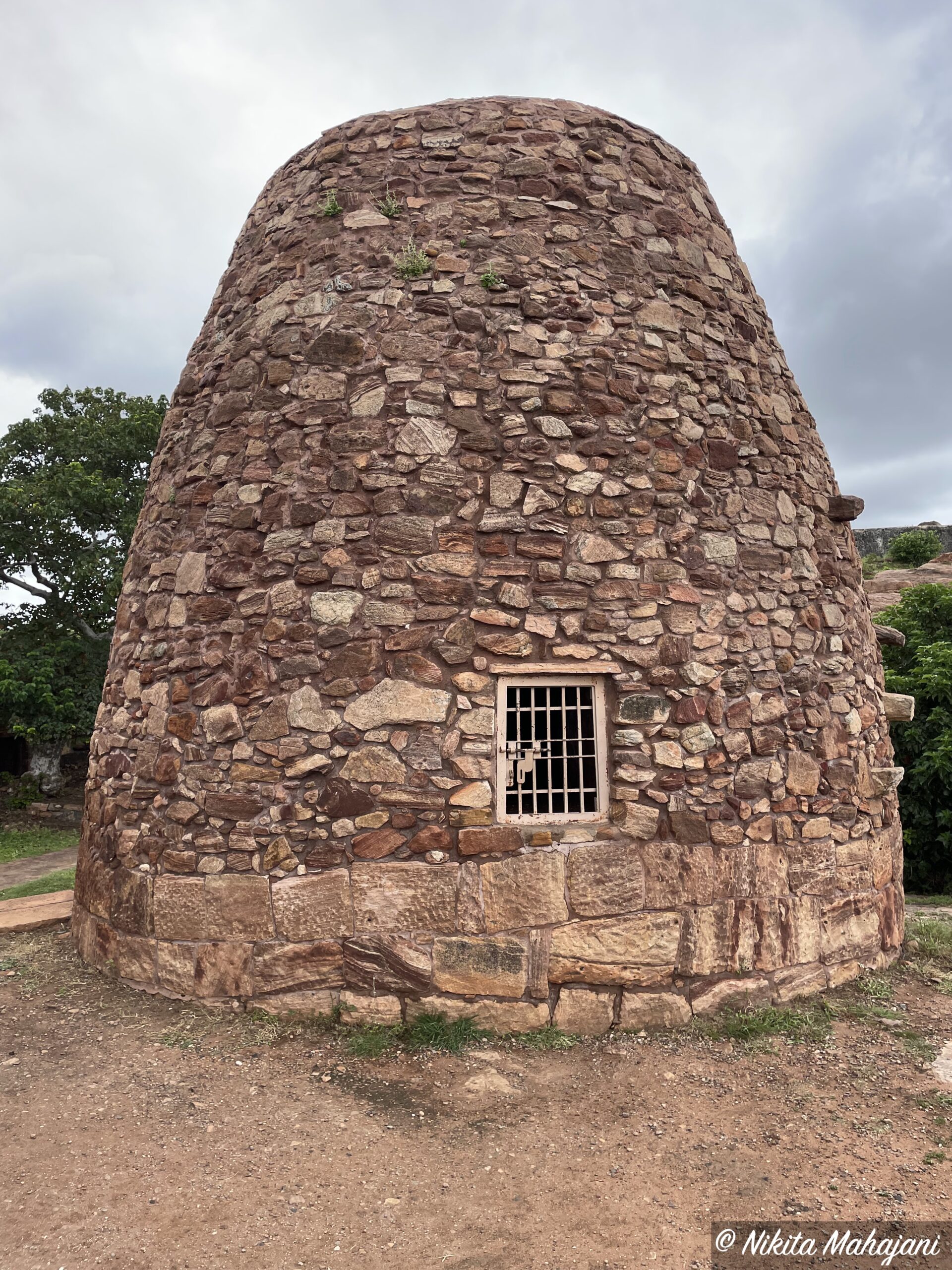
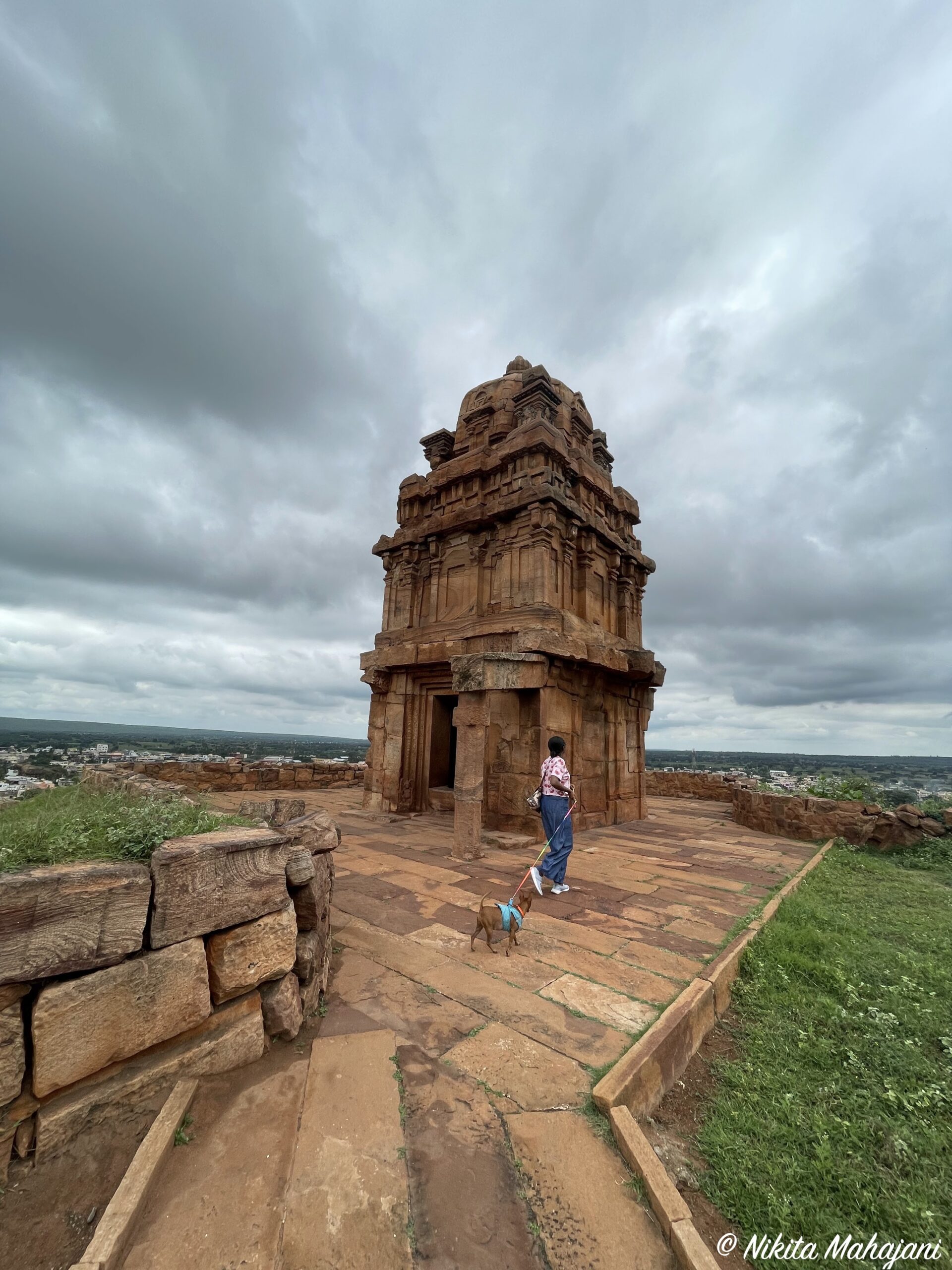
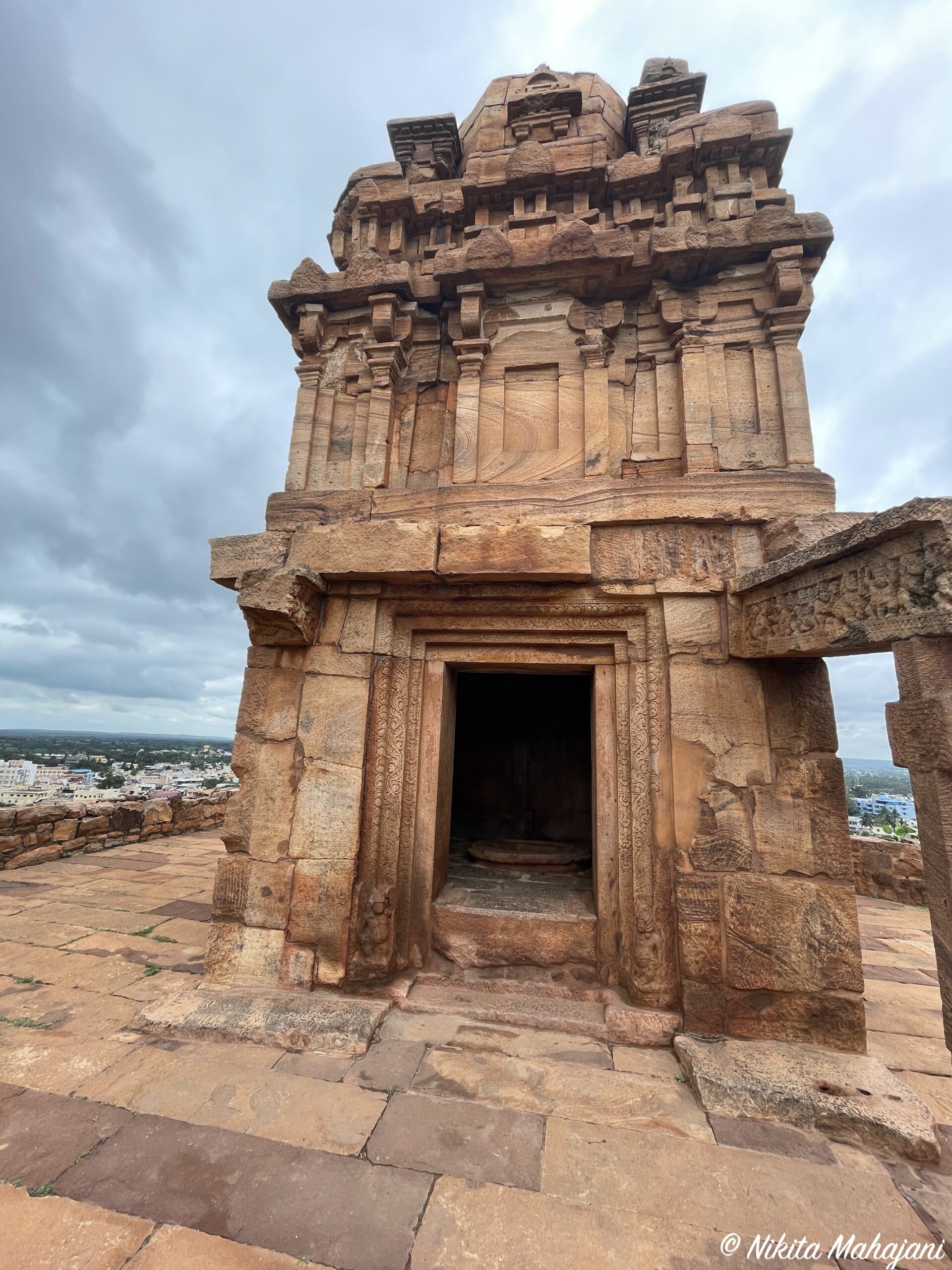
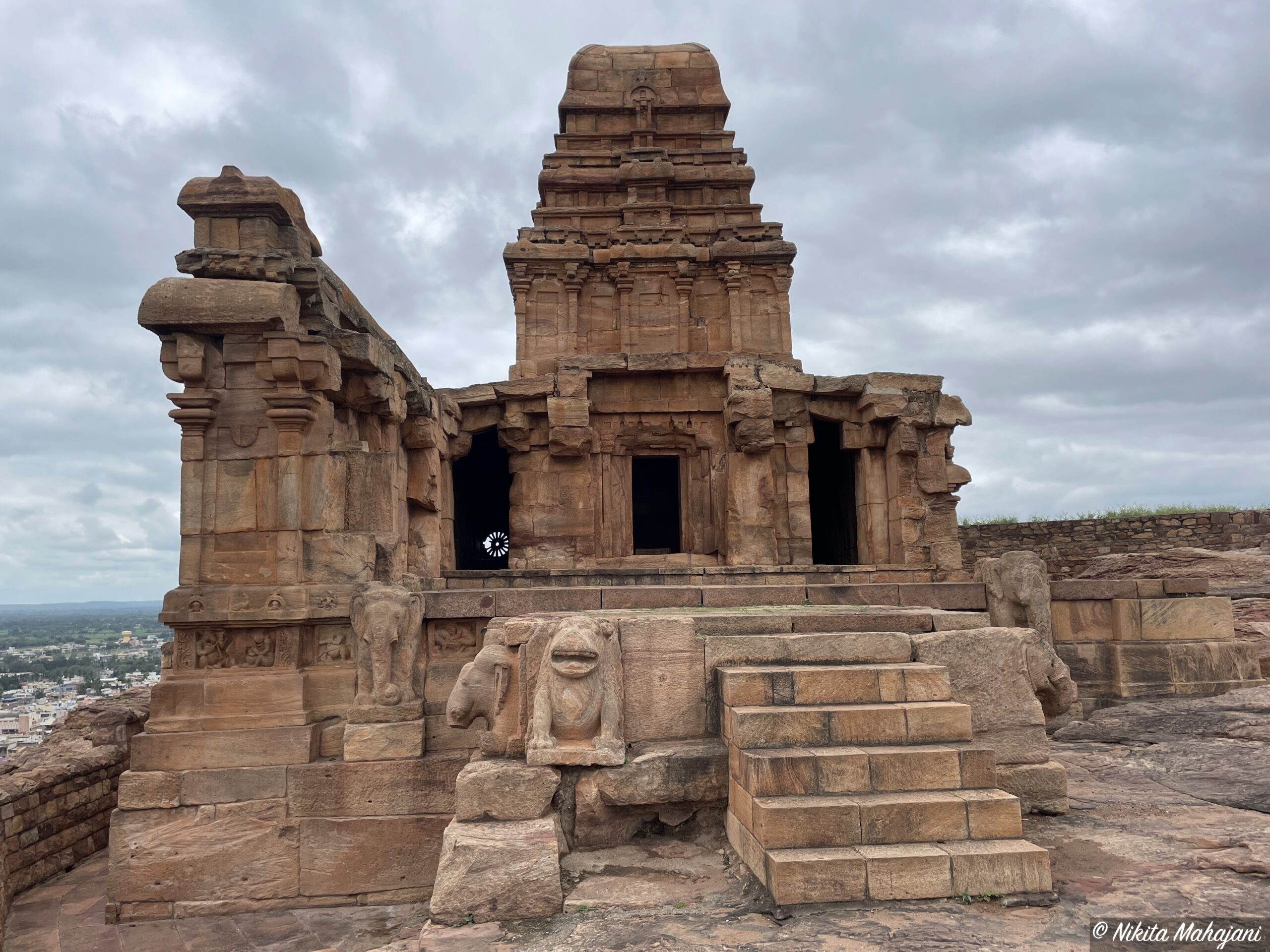
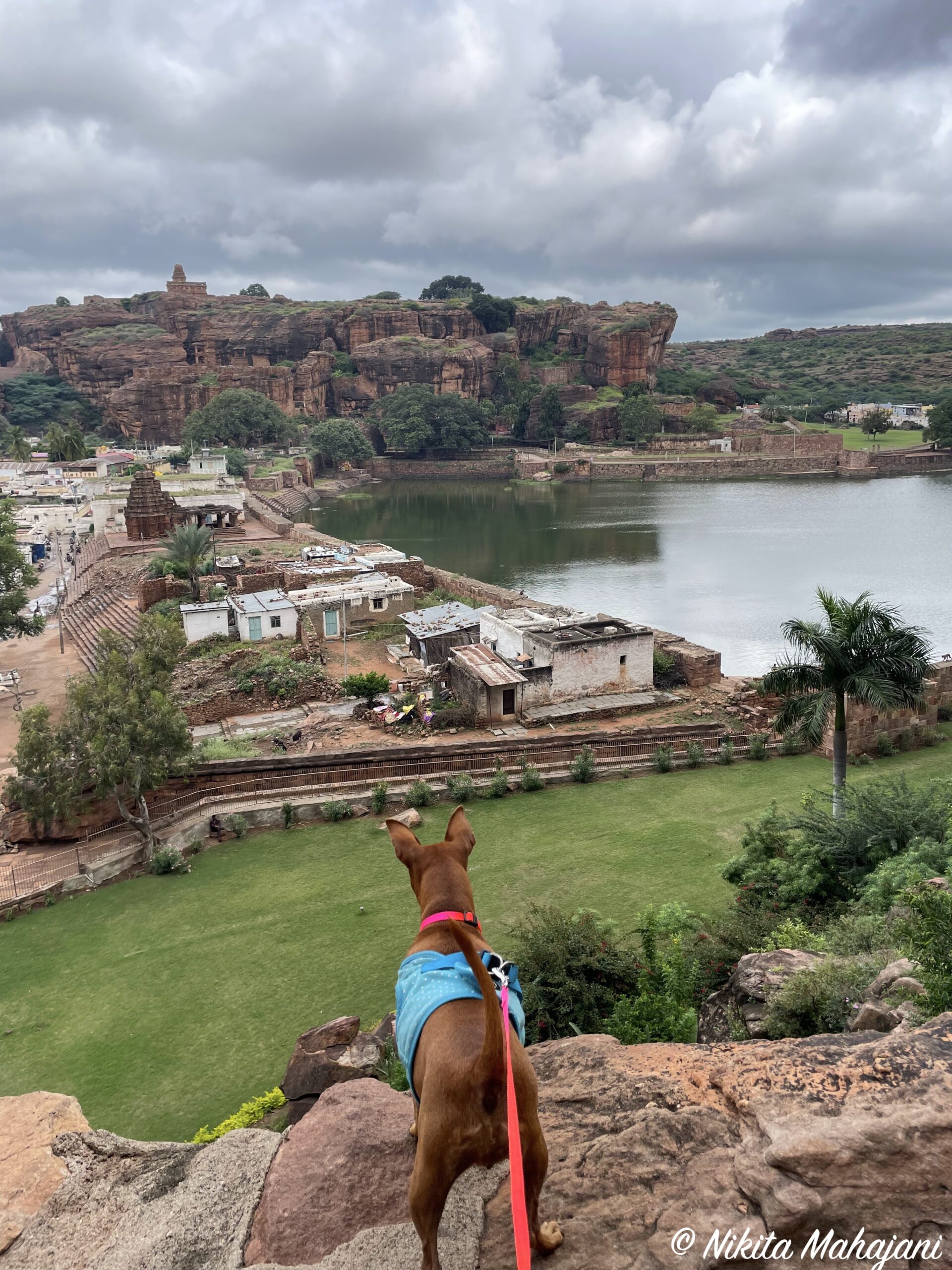
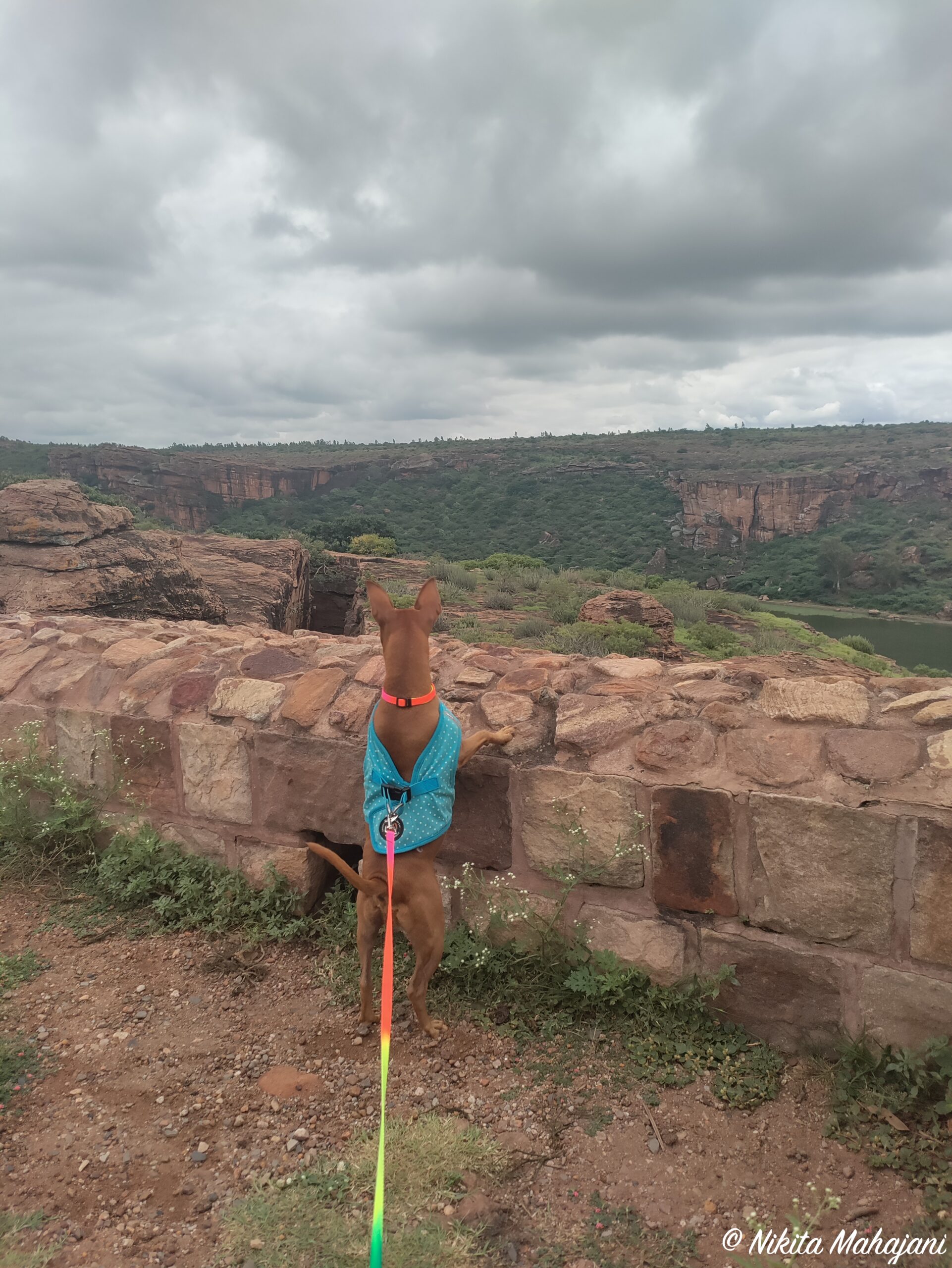
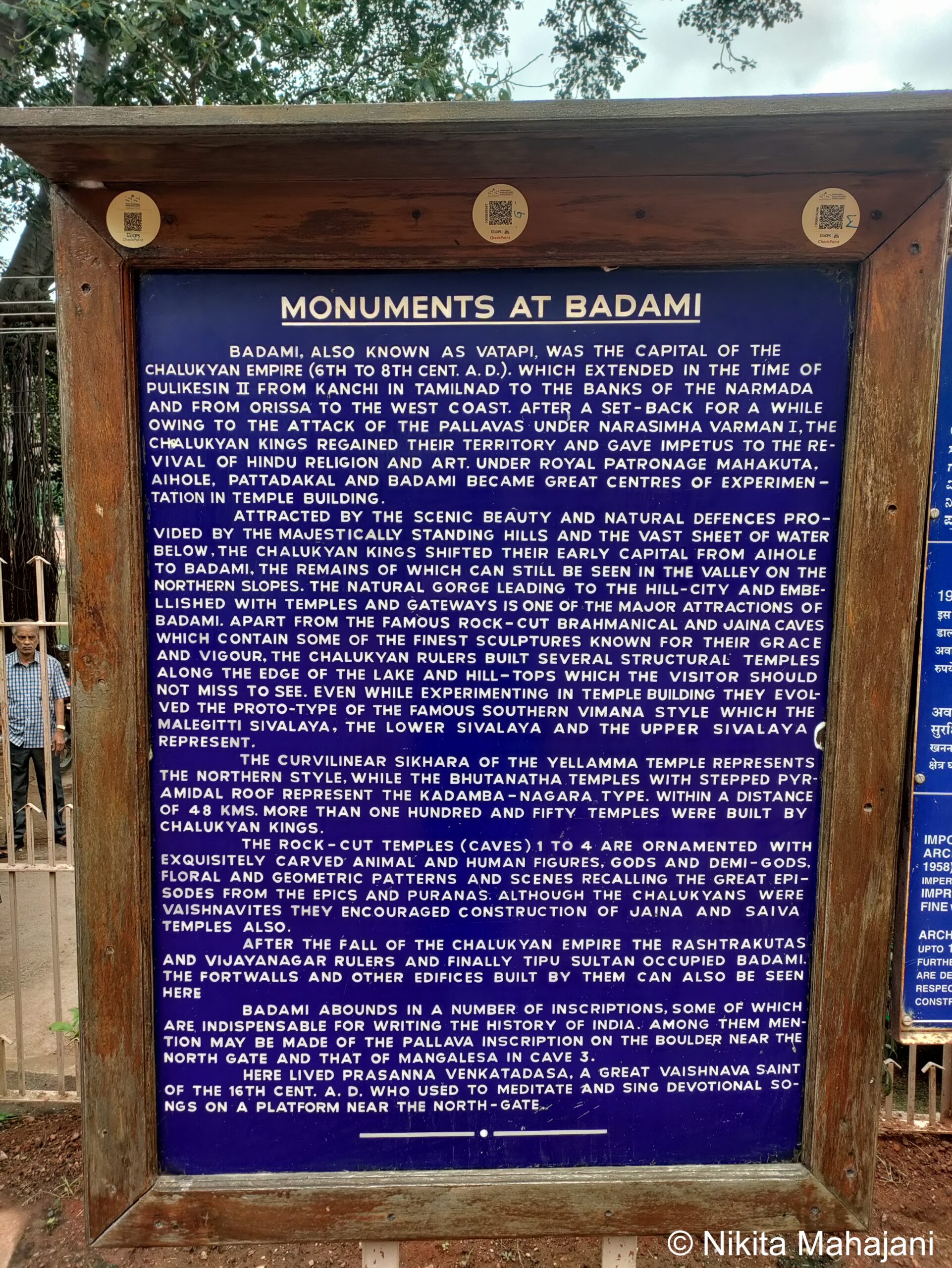
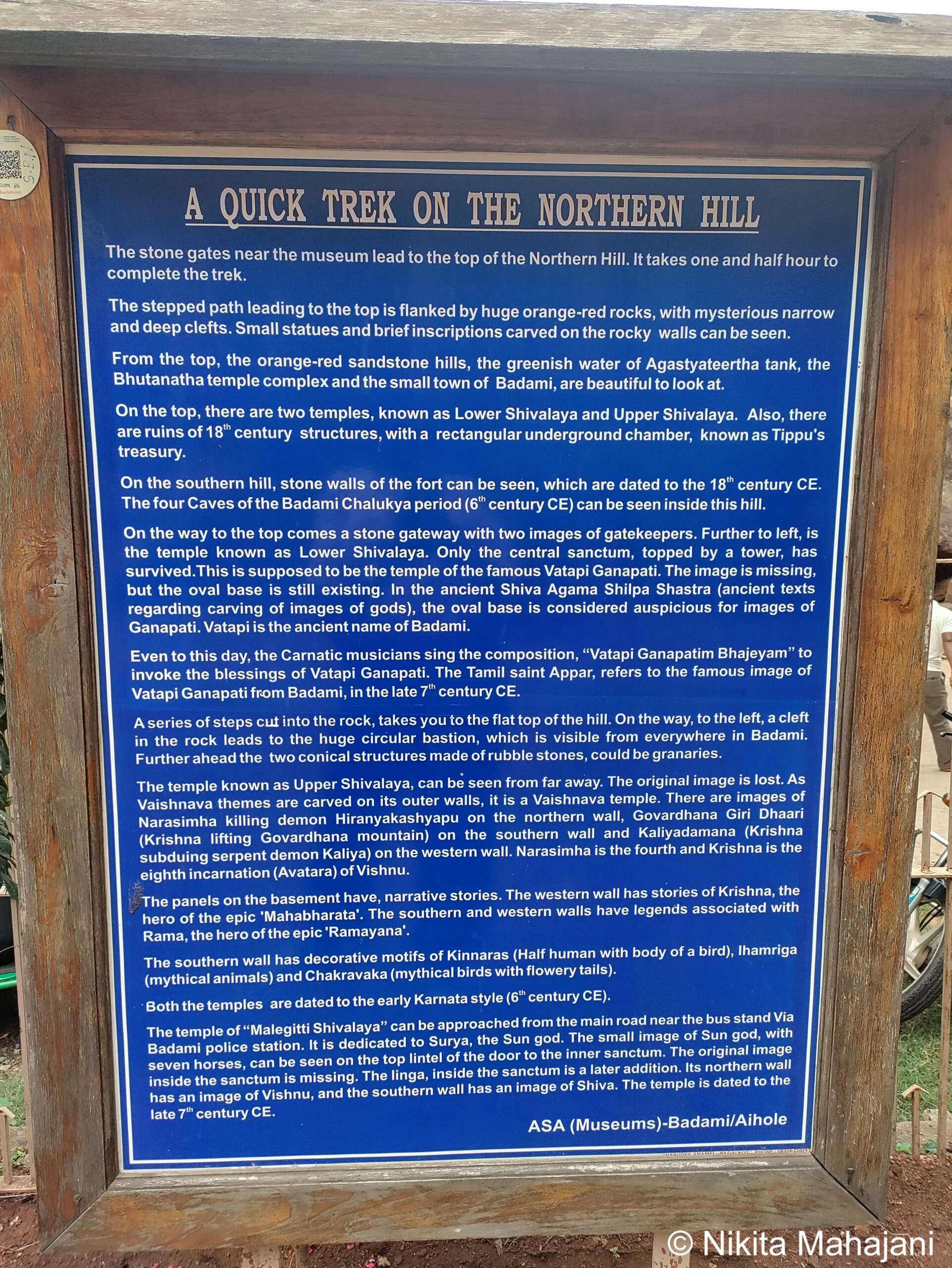
After exploring the Archaeological Museum and Badami Fort, the auto driver dropped us back to Badami cave parking lot where we had parked our car. We came across a beautiful temple called Yellamma Devi Gudi adjacent to the Badami cave parking lot.
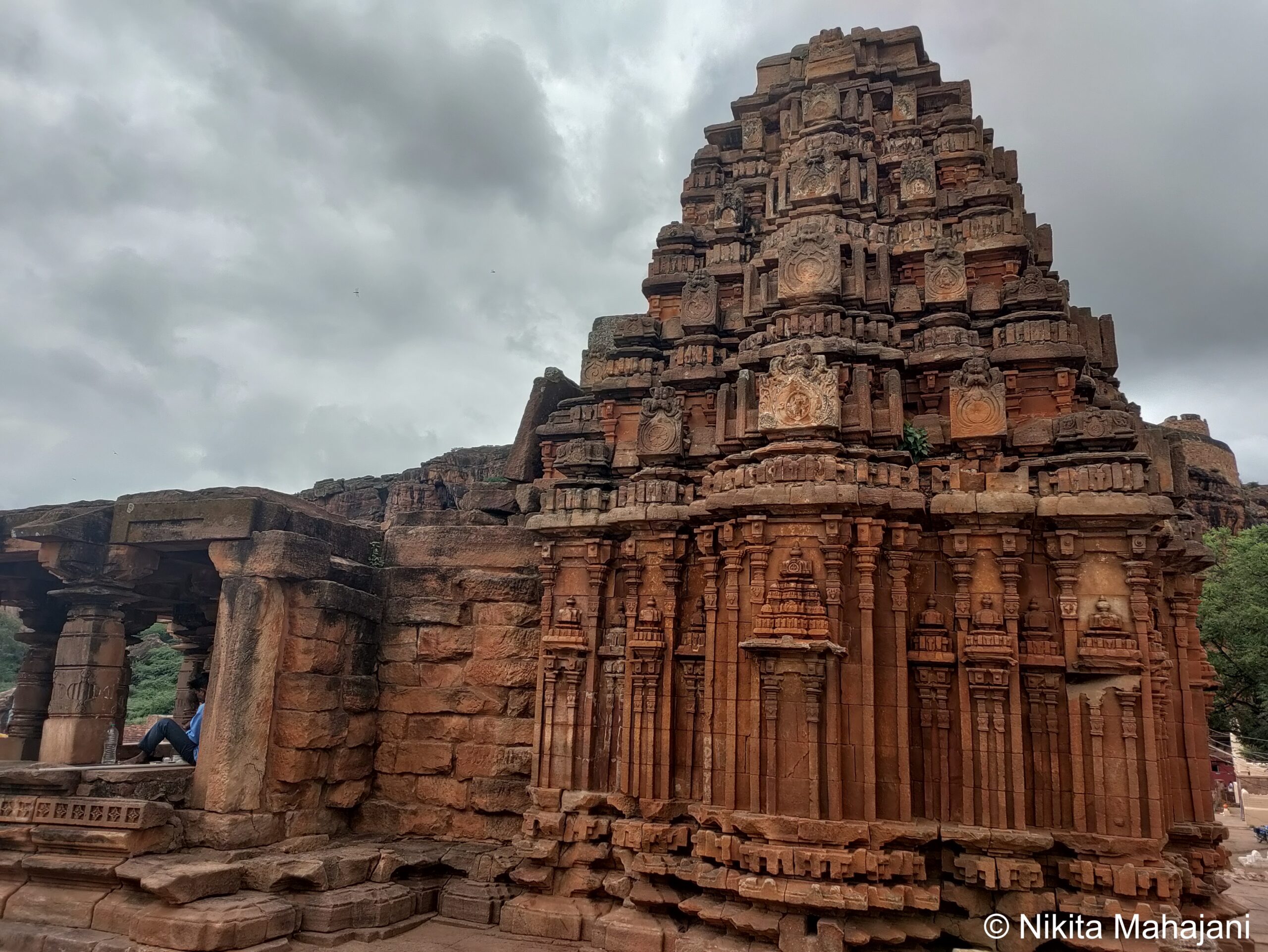
Perched on the western banks of Agastya (Vatapi) Lake in Badami, the Yellamma Temple is a lesser-known yet captivating 11th-century shrine built by the Western Chalukyas. Blending elements of both Nagara and Dravida architectural styles, it beautifully represents the hybrid aesthetic typical of Chalukyan design. The temple is dedicated to Goddess Yellamma, also known as Renuka—a revered deity in Karnataka and Telangana, believed to be the wife of sage Jamadagni and mother of Parashurama, the sixth incarnation of Vishnu.
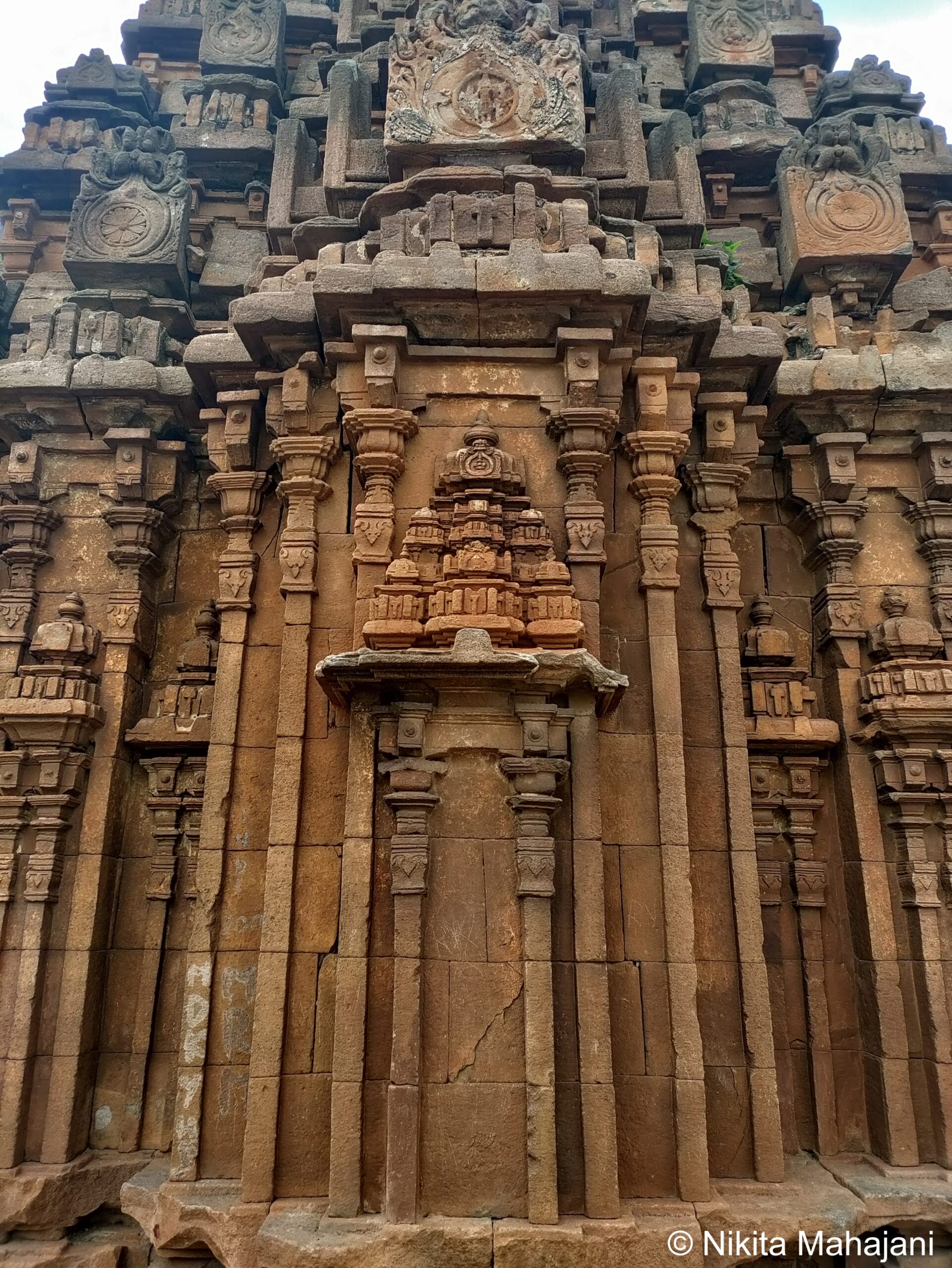
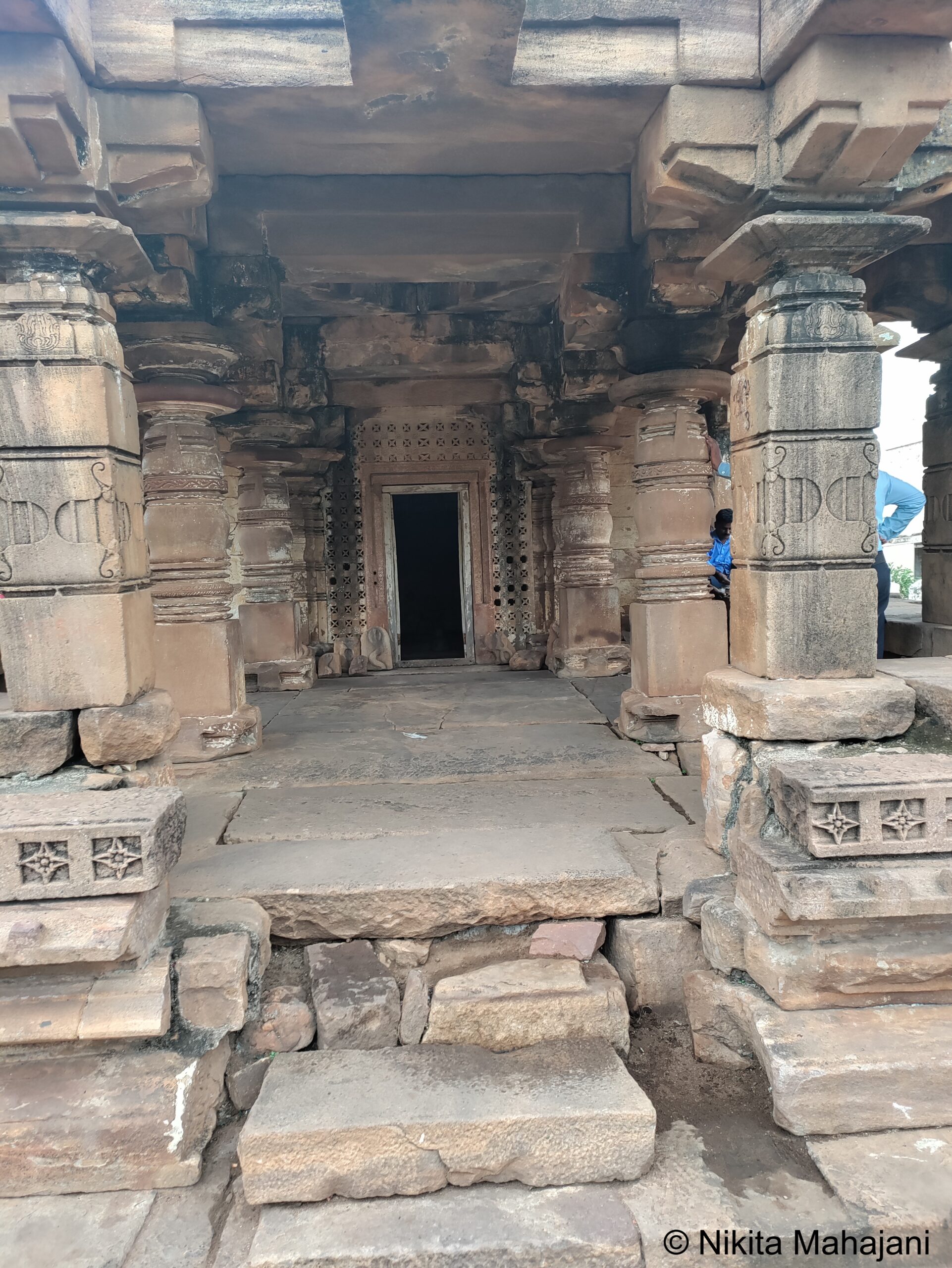
We enjoyed a traditional Lingayat lunch at Sri Veerabhadreshwar Lingayat Khanavali. It is a pet friendly restaurant. They have a vey friendly black labrador. The dining area of the restaurant is a very small setup in the front yard of their small bungalow. The food is prepared in very clean and hygienic condition. This fresh and steaming hot home cooked thali is the best meal that I had in the entire trip. The rates are also very reasonable. We parked our car in his plot only.
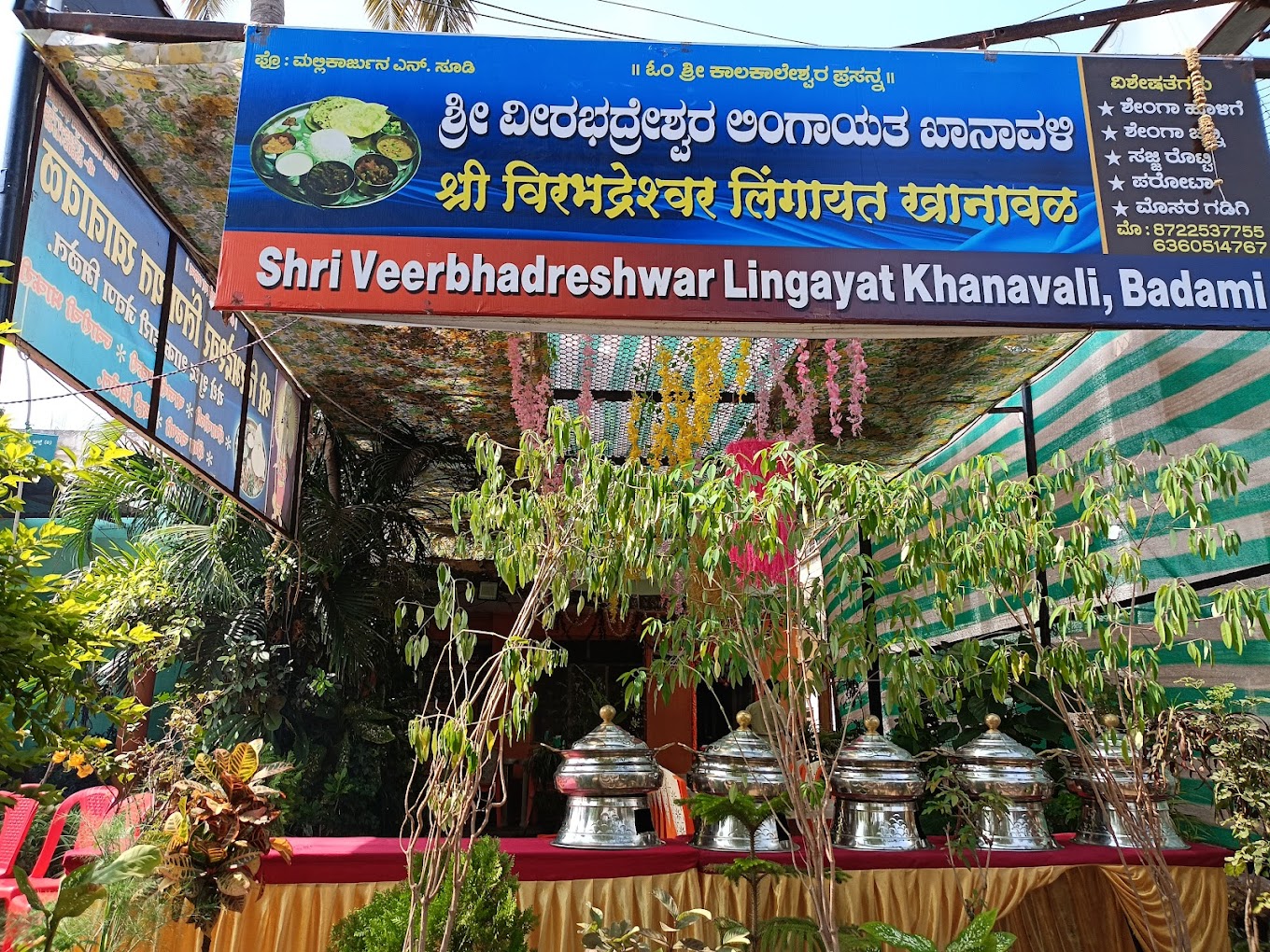
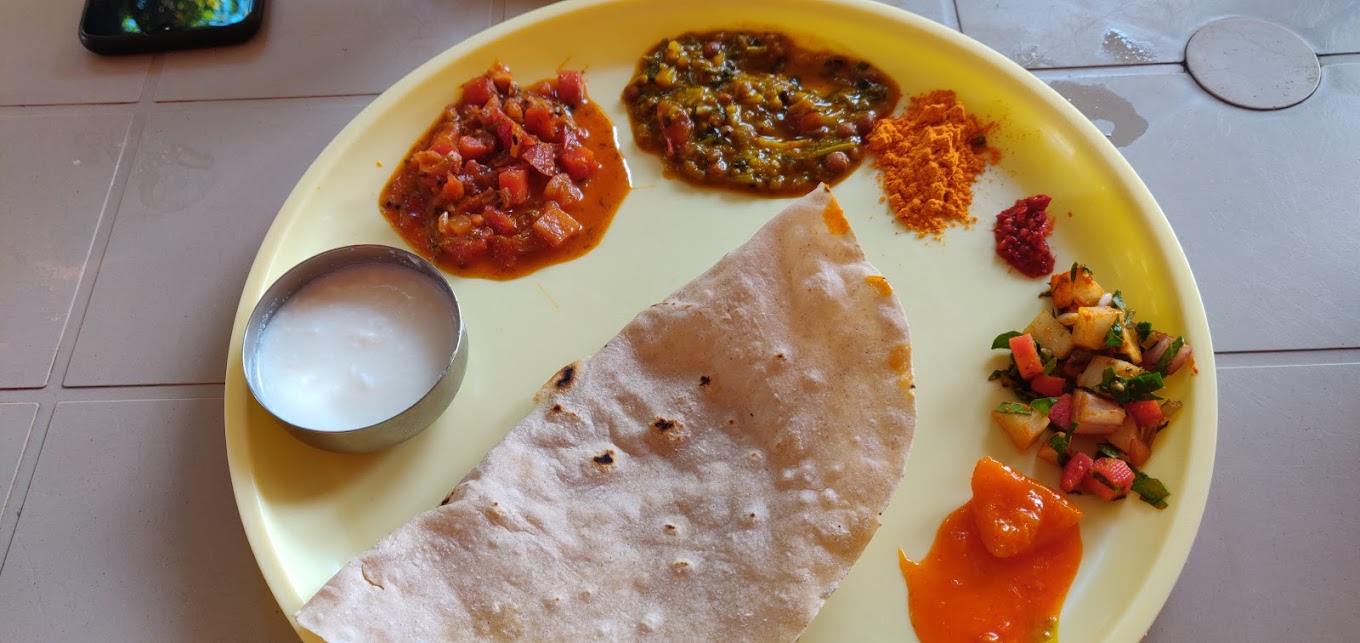
Post -lunch, we were off to Pattadakkal. It was a 30mins drive from Badami.
Since Pattadakallu is UNESCO World Heritage Site, you need to buy tickets. Rs.40 per adult and children up to 12 years children do not require tickets. They do have facilities of drinking water, places to sit and also washroom too. Outside foods are not allowed inside. Camera can be carried and pictures can be taken too. There are no high end restaurants in this small town so I would advise to bring your own lunch if you don’t want to eat in a very small ( unhygienic) restaurant.
It is a beautiful monument built during Chalukya dynasty. There are three types of Temples here. Here they used to do the king’s Patta Abhishek that’s why name as Pattadakallu. The carvings are very beautiful. There are Ramayana and Mahabharata stories carved out in stones.The Pattadakallu Temple complex consists of following temples:
- Kashi Vishwanatha Temple
A Nagara-style masterpiece, dedicated to Lord Shiva, featuring a pyramidal tower and carvings of scenes from Hindu mythology. The Pattadakallu temples were not merely places of worship but also centers of learning, art, and culture. They celebrate the Chalukyan dynasty’s patronage of art and architecture and reflect India’s deep-rooted spirituality. - Virupaksha Temple
The crown jewel of Pattadakallu, built by Queen Lokamahadevi to commemorate her husband’s victory over the Pallavas. It features grand sculptures from Hindu epics like the Ramayana and Mahabharata, a beautifully adorned Shivalinga, and an exquisite Nandi mandapa. - Mallikarjuna Temple
Built by Queen Trailokyamahadevi, this temple is similar in design to Virupaksha but slightly smaller. It is adorned with delicate carvings and a peaceful sanctum for worship. - Sangameshwara Temple
The oldest temple in Pattadakallu, showcasing pure Dravidian architecture. It is a simple yet striking structure that exudes timeless beauty. - Papanatha Temple
An example of Nagara-Dravidian architectural synthesis, this temple is famous for its intricate carvings of deities, celestial beings, and ornate pillars.
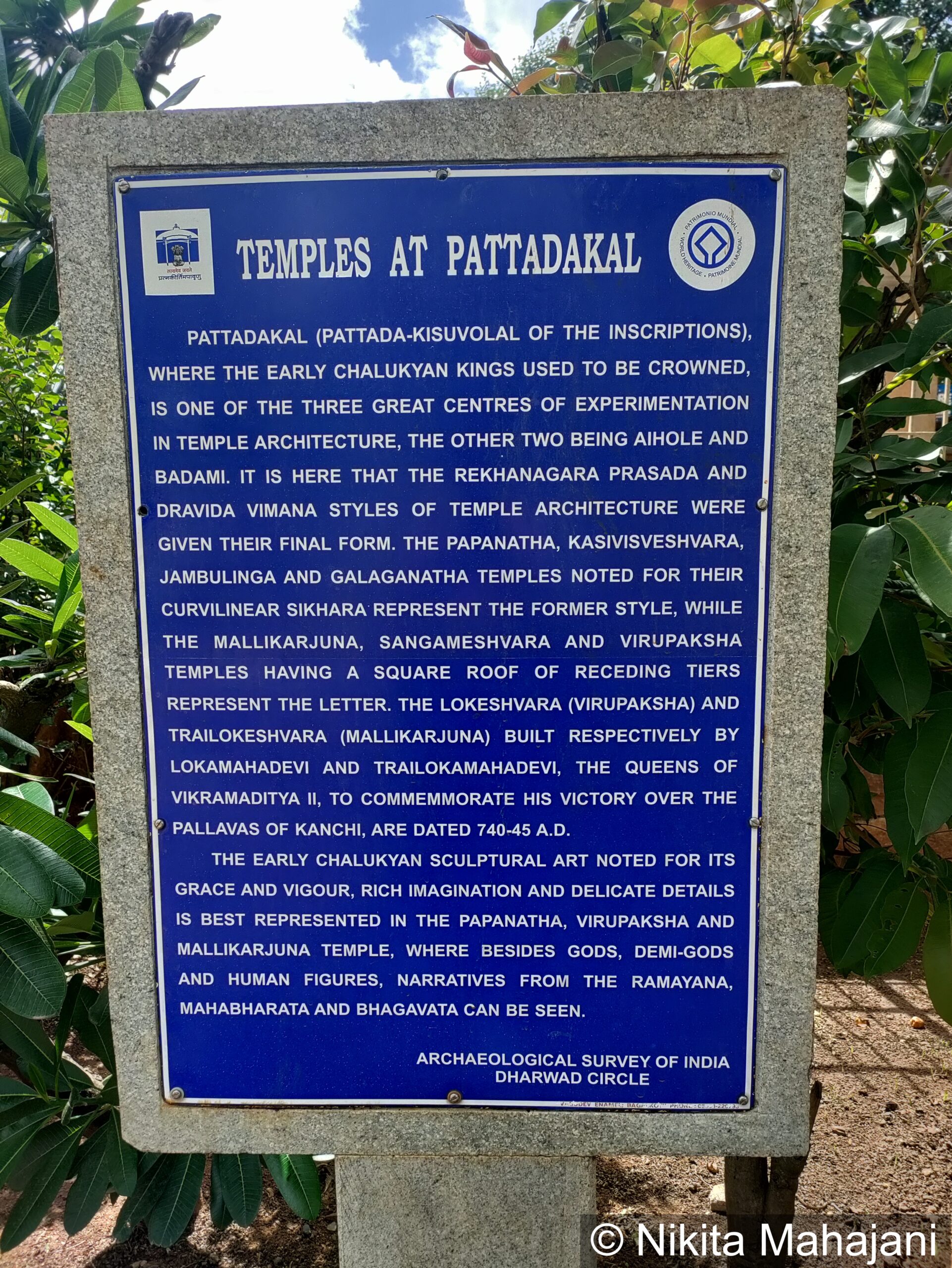
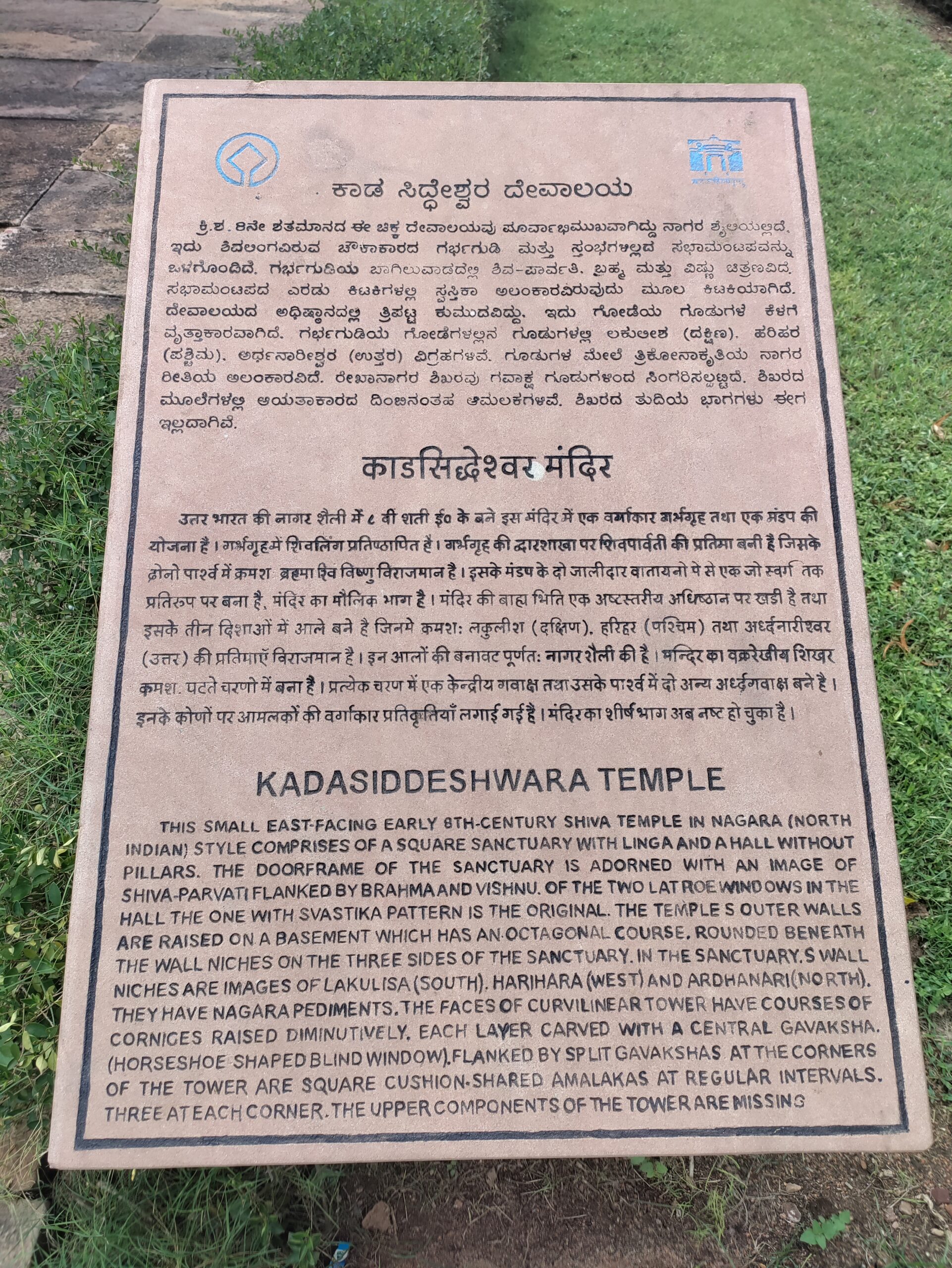
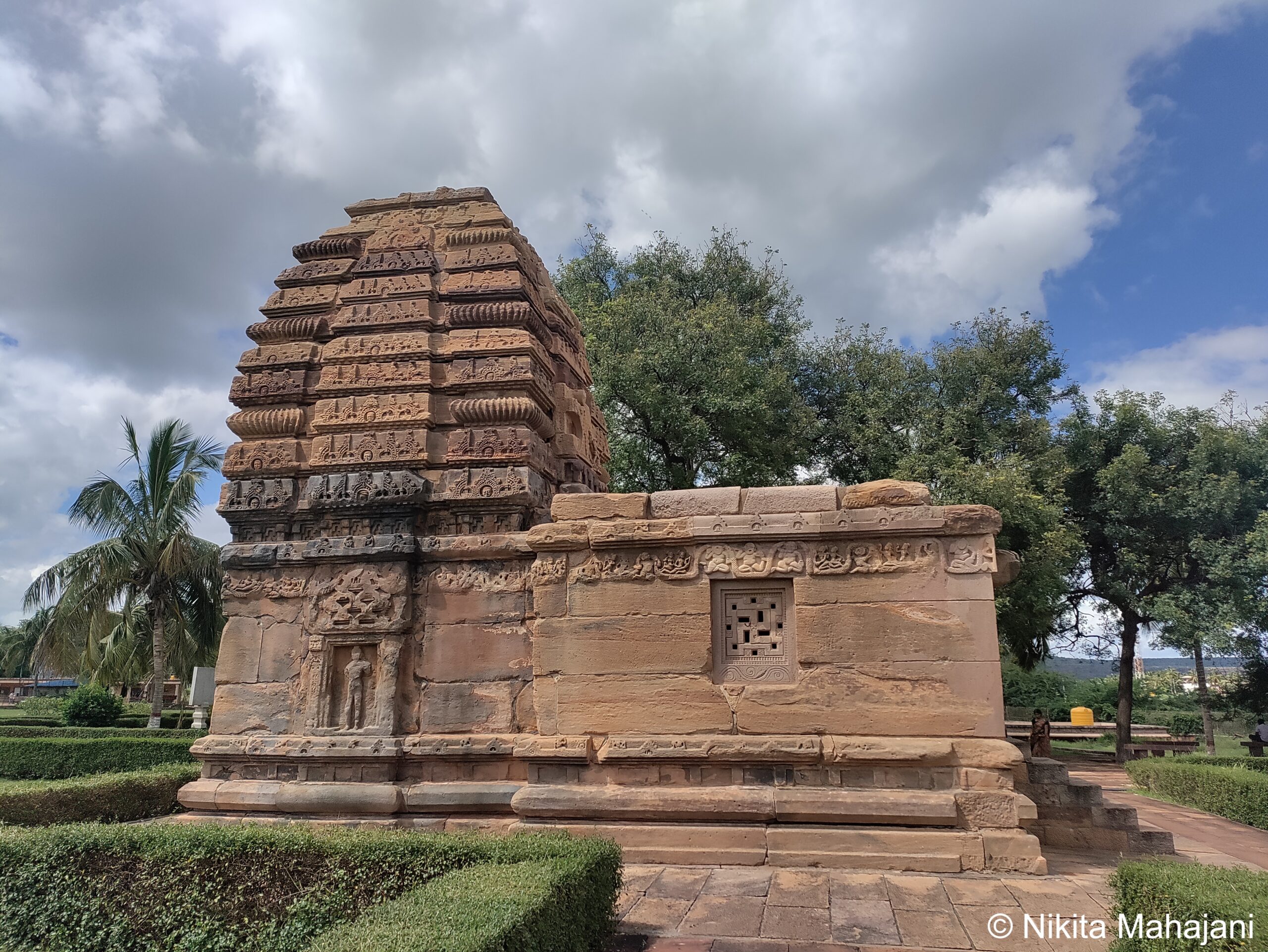
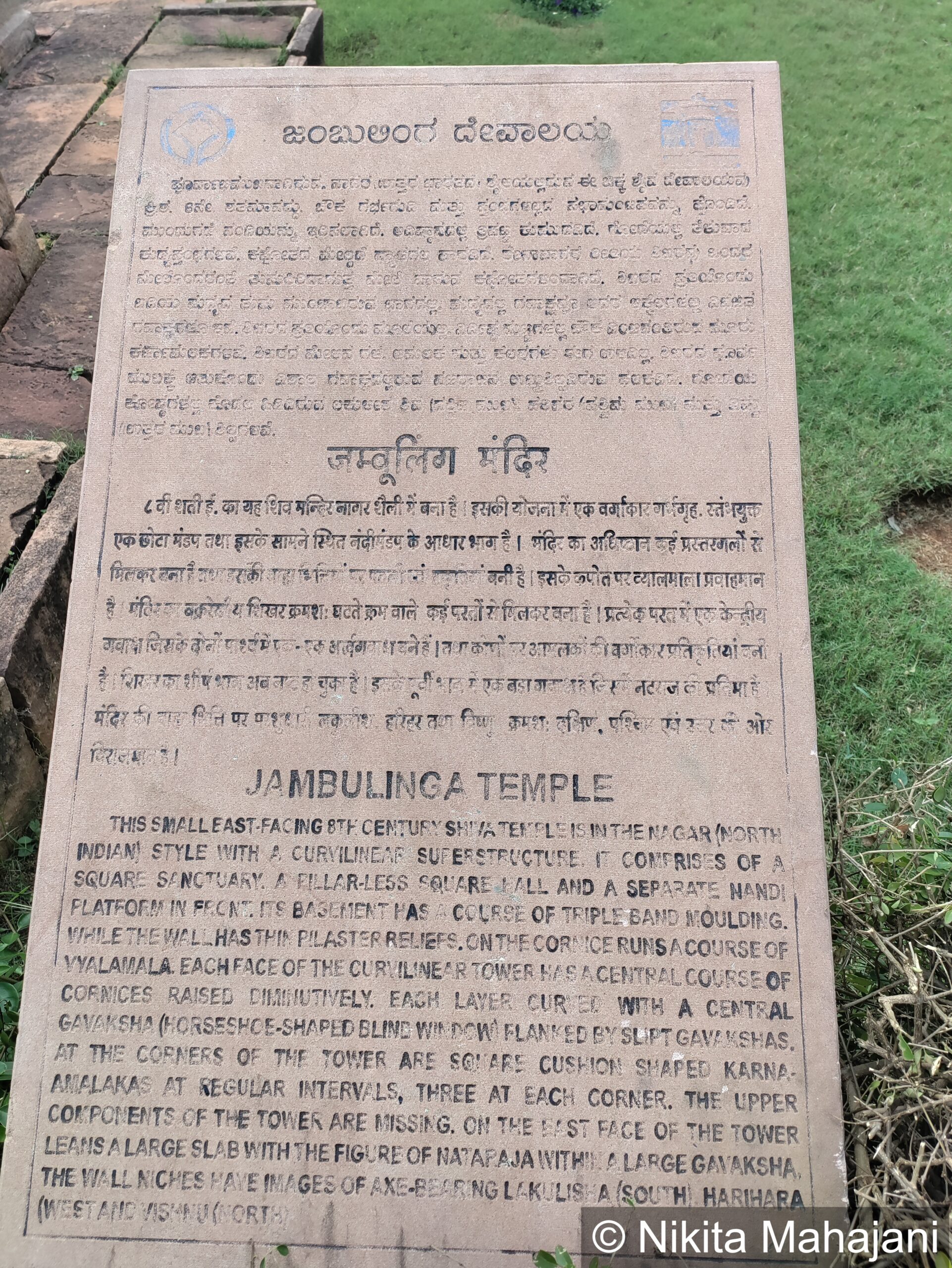
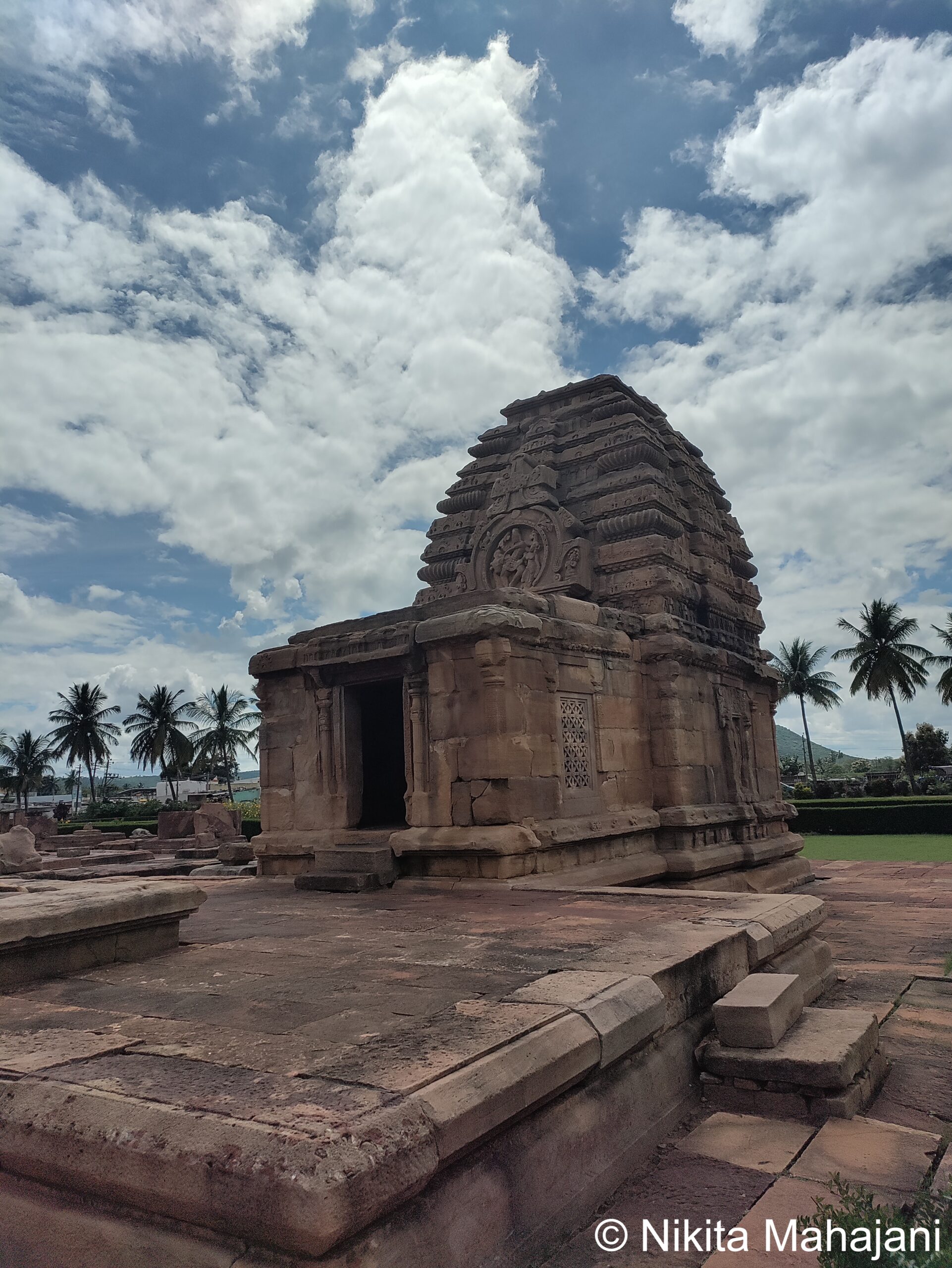
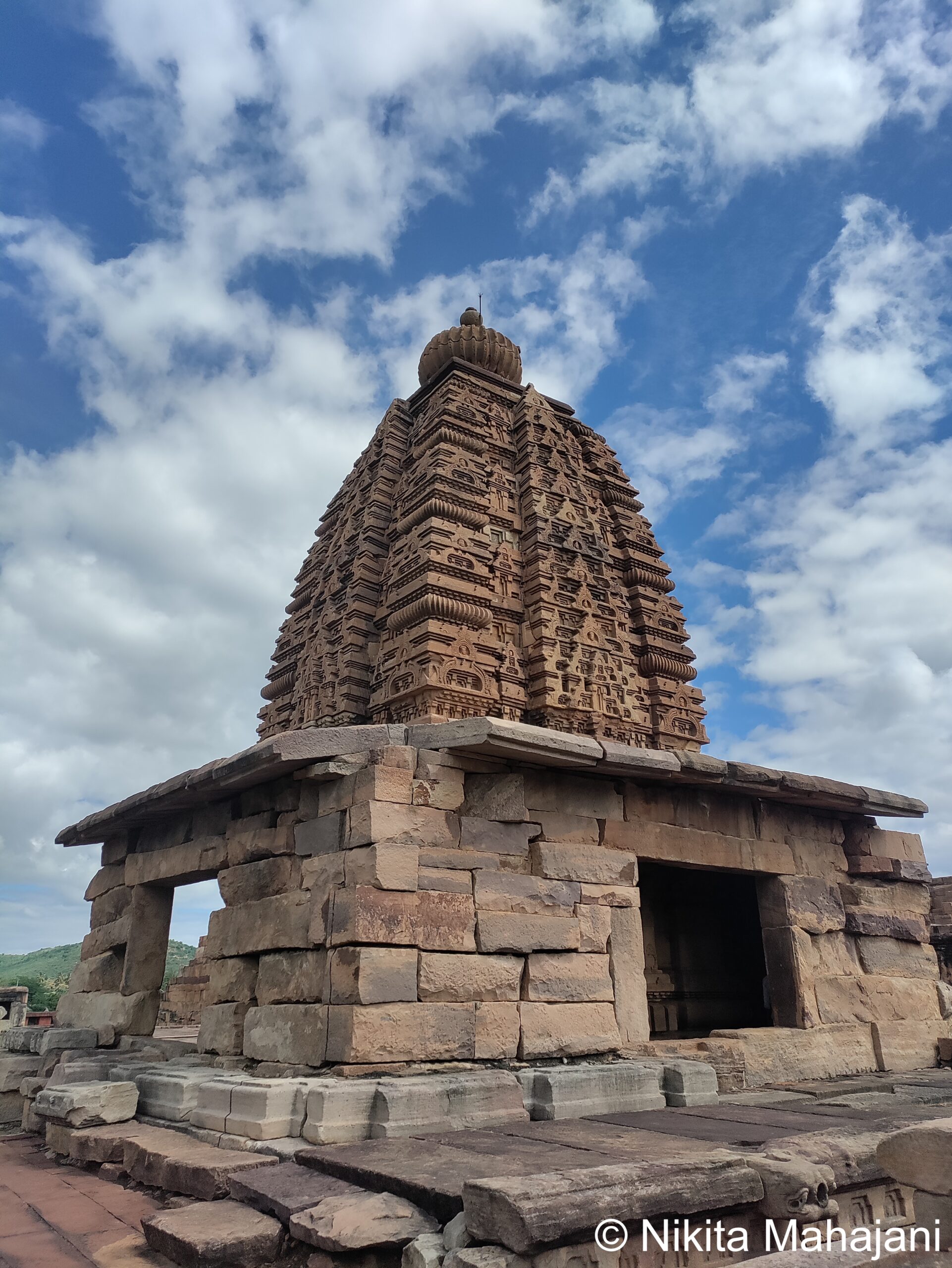
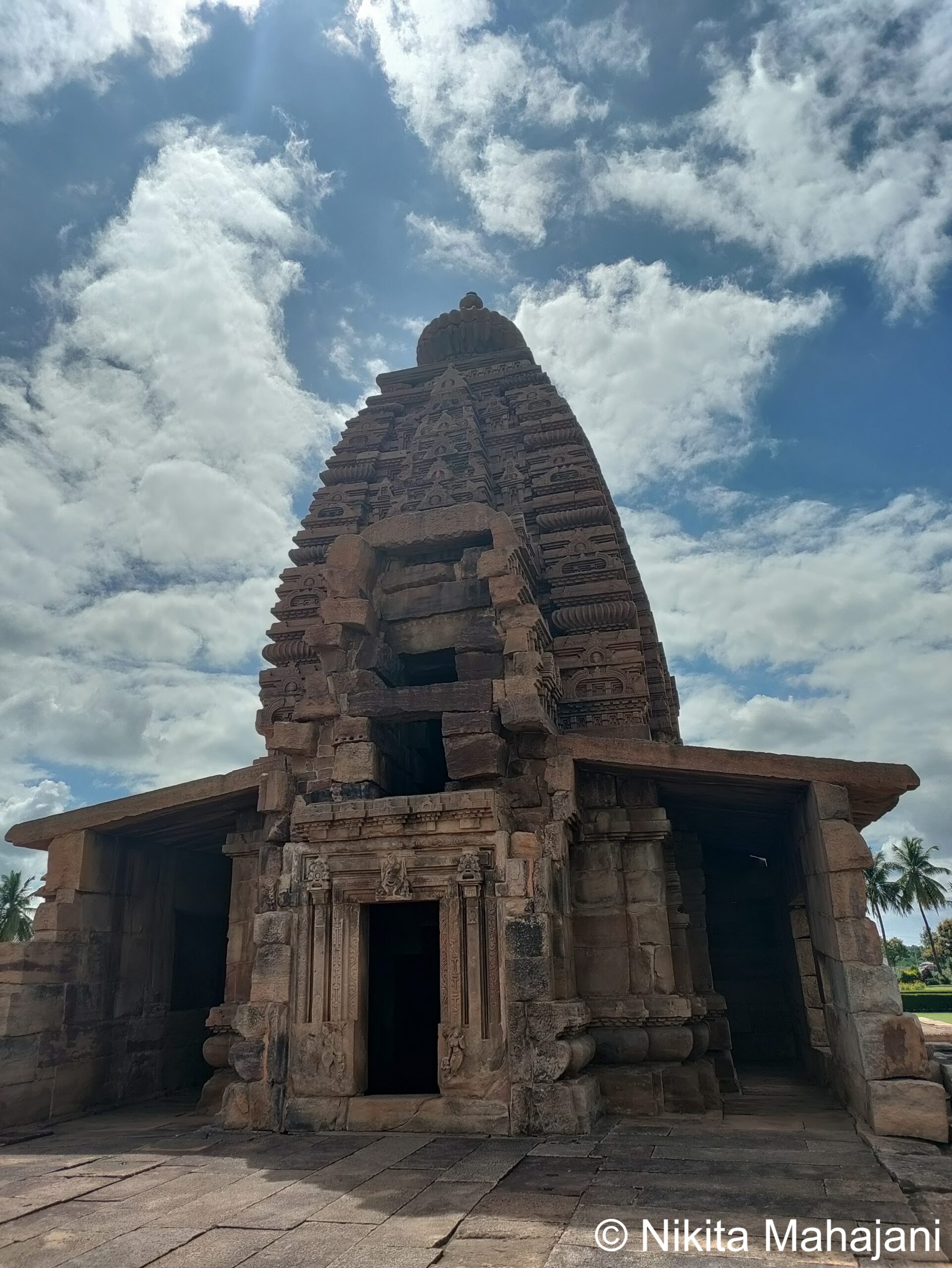
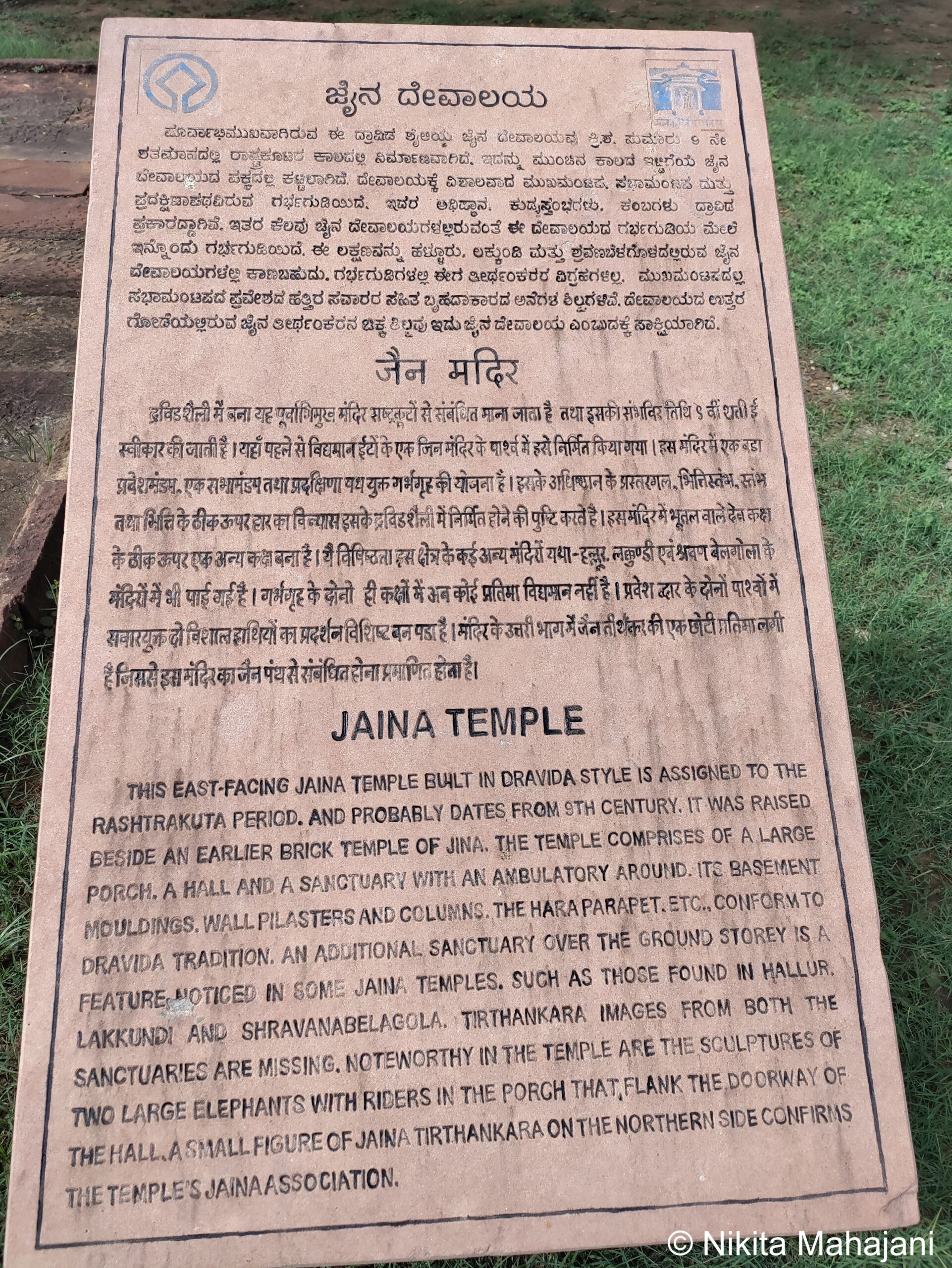
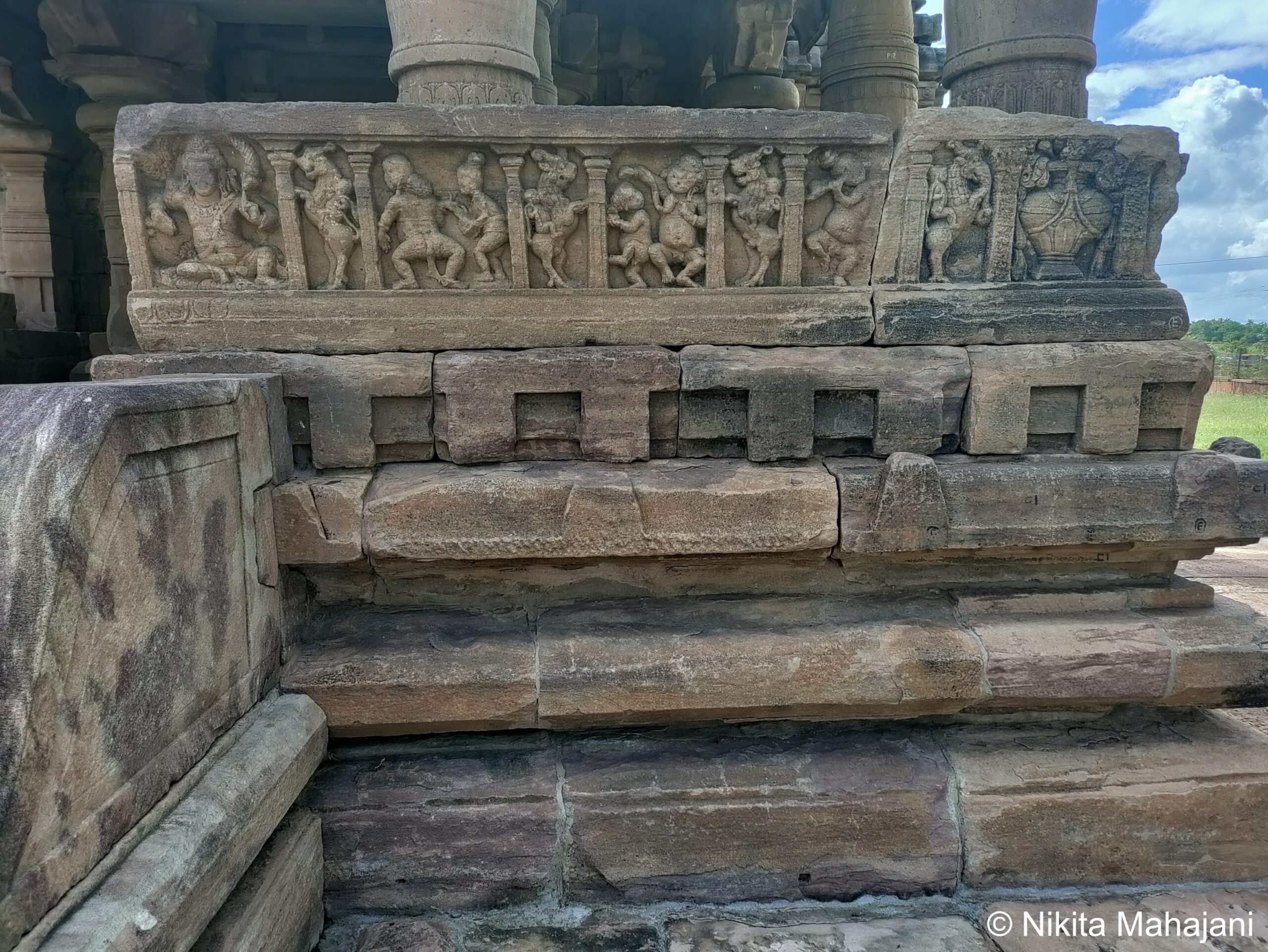
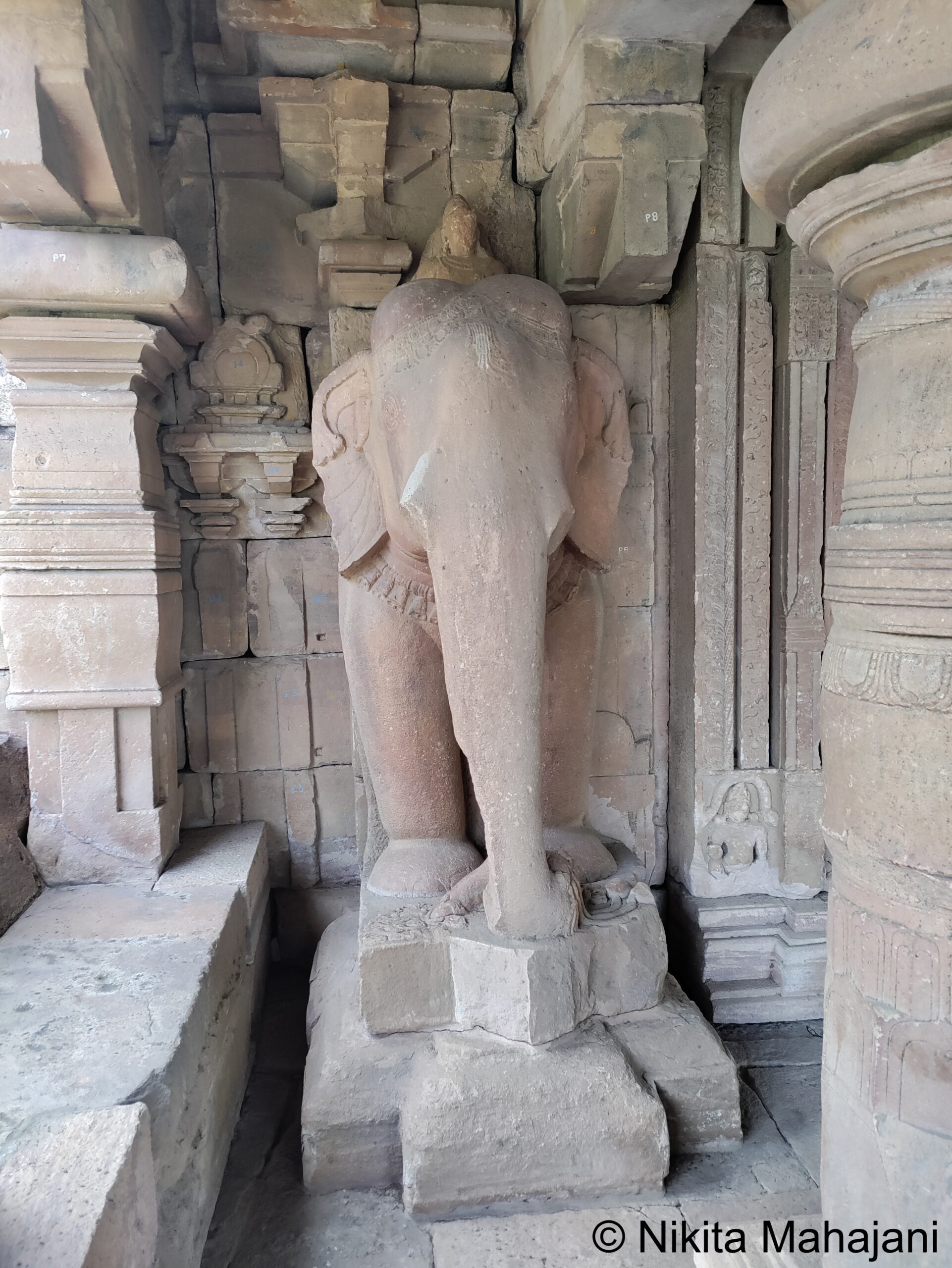
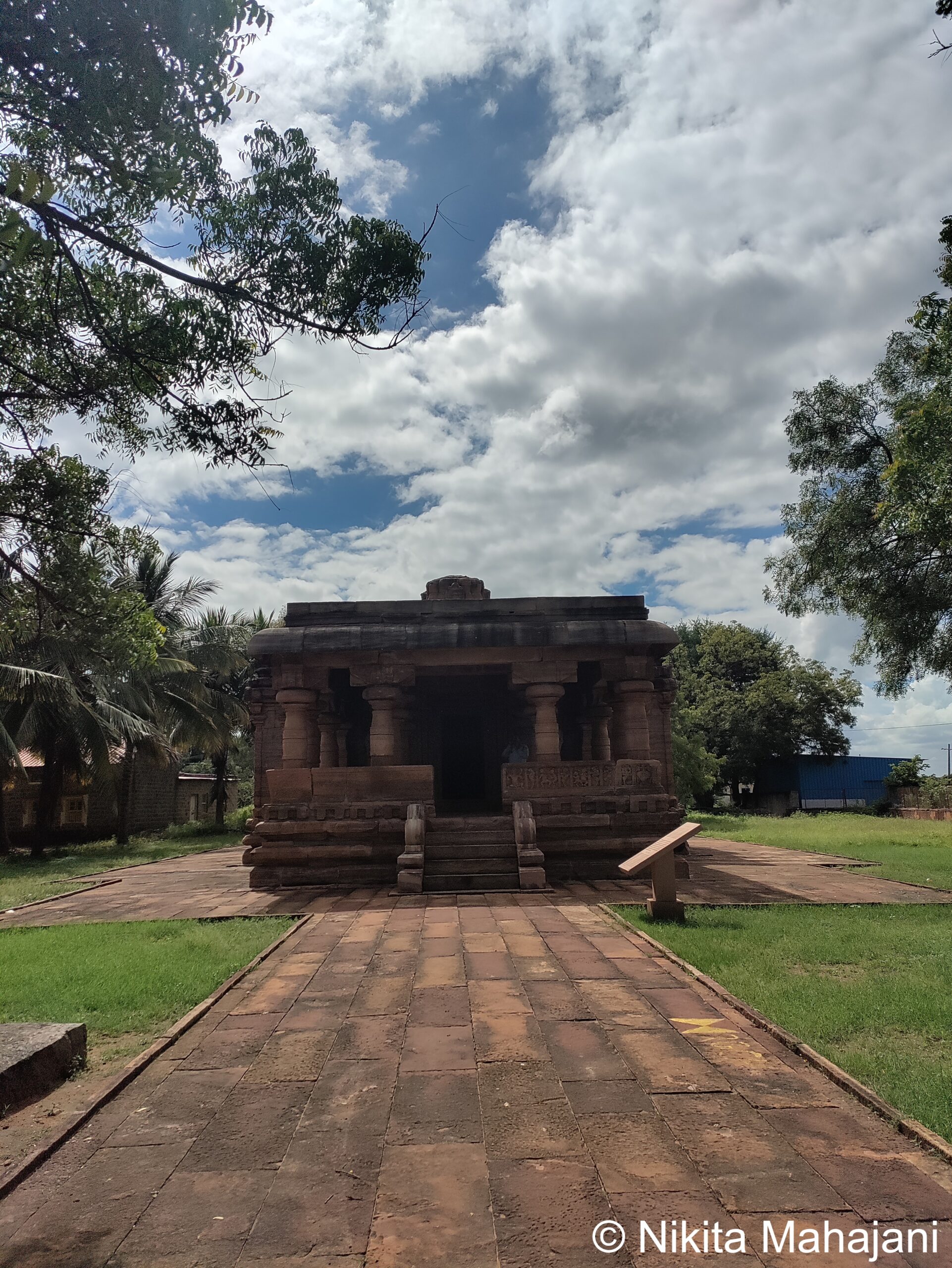
On the way to Aihole we came across a stunning temple complex on the banks of river Malaprabha. We stopped the car and it turned out to be ‘Sri Ramalingeshwara Gudi‘. It has fortification walls on all sides. There are a series of Nagshilas (snake stones) lying in its premises. The temple offers stunning views of the river Malaprabha. We proceeded the journey to Aihole
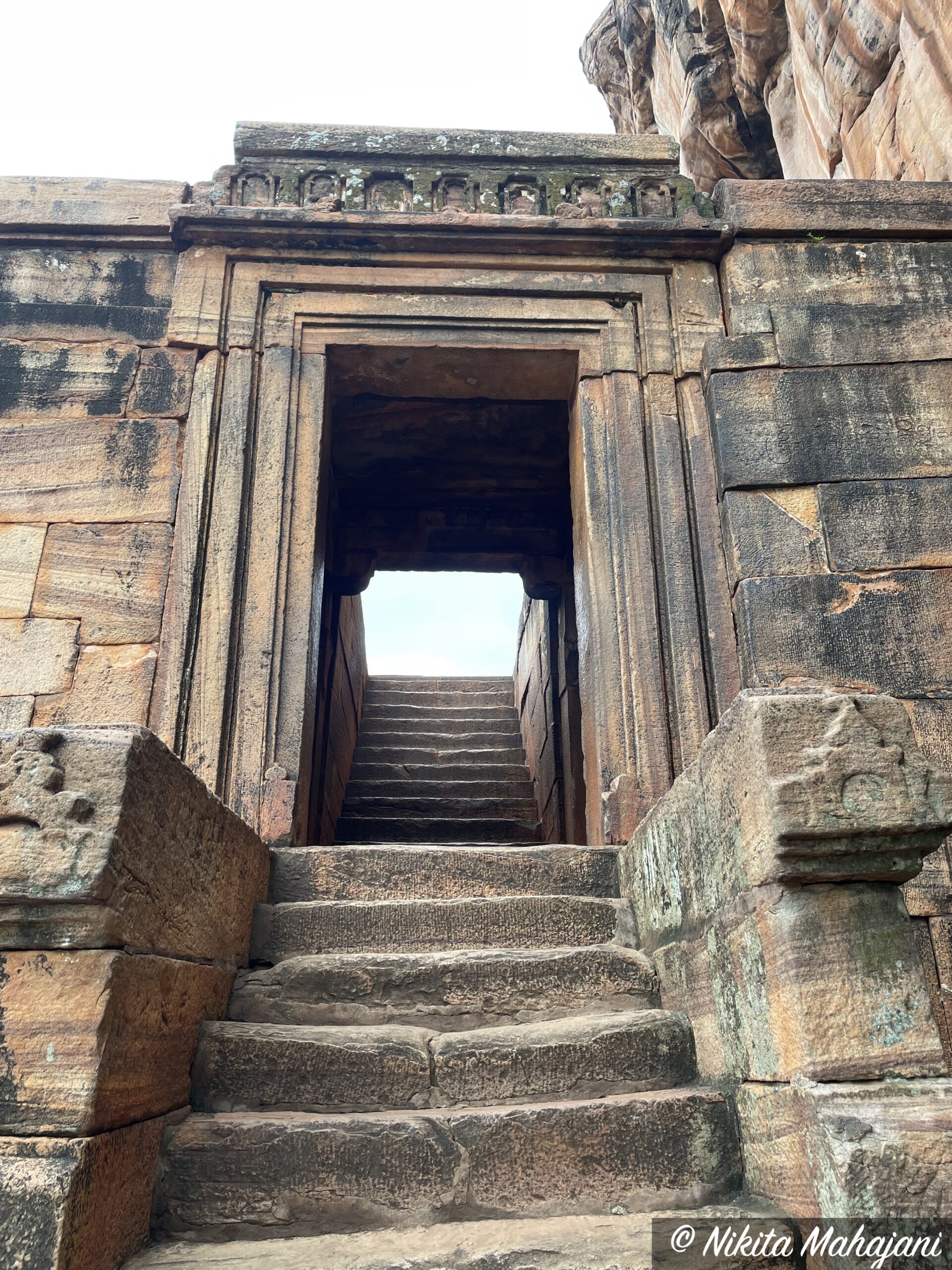
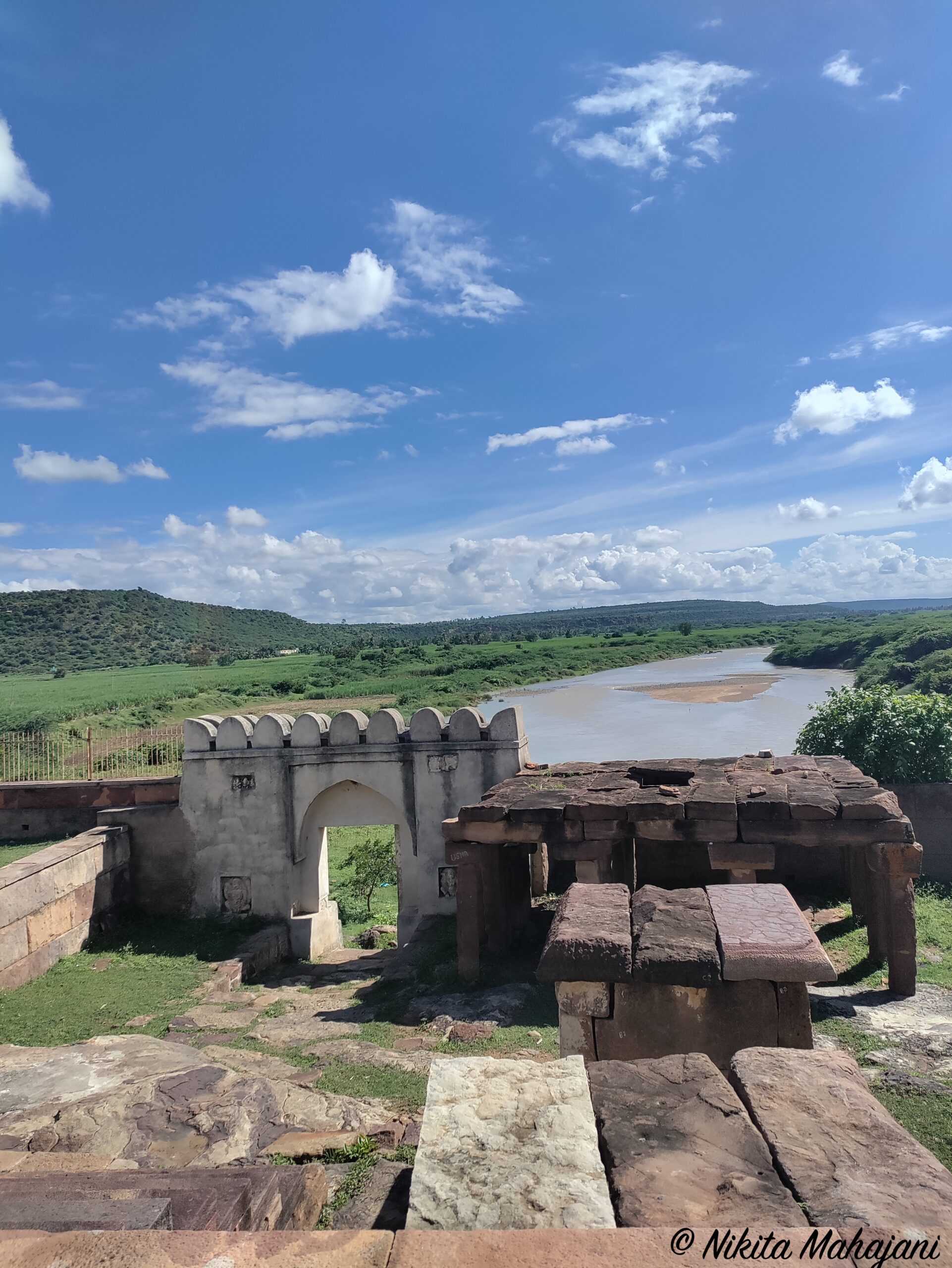
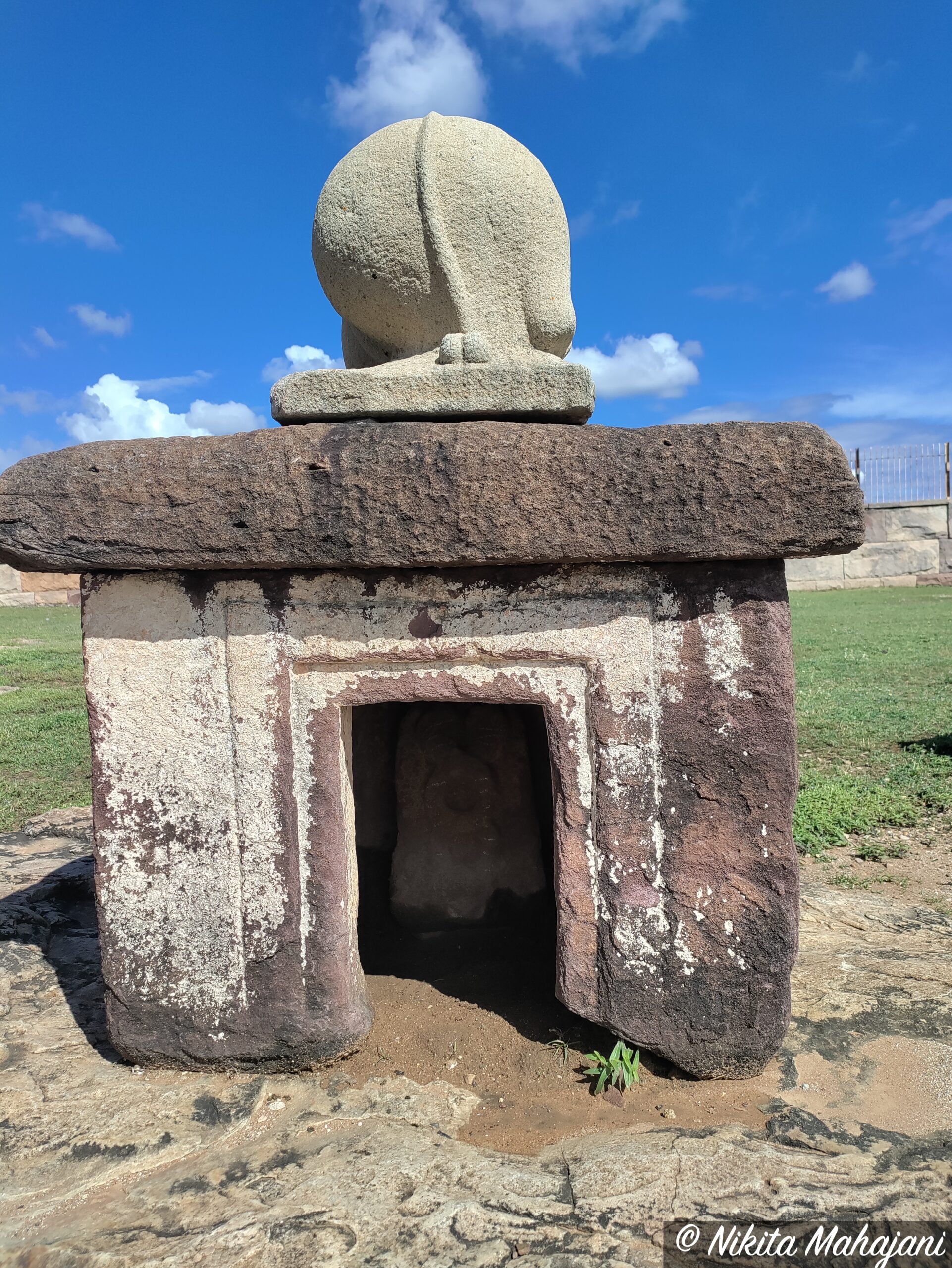
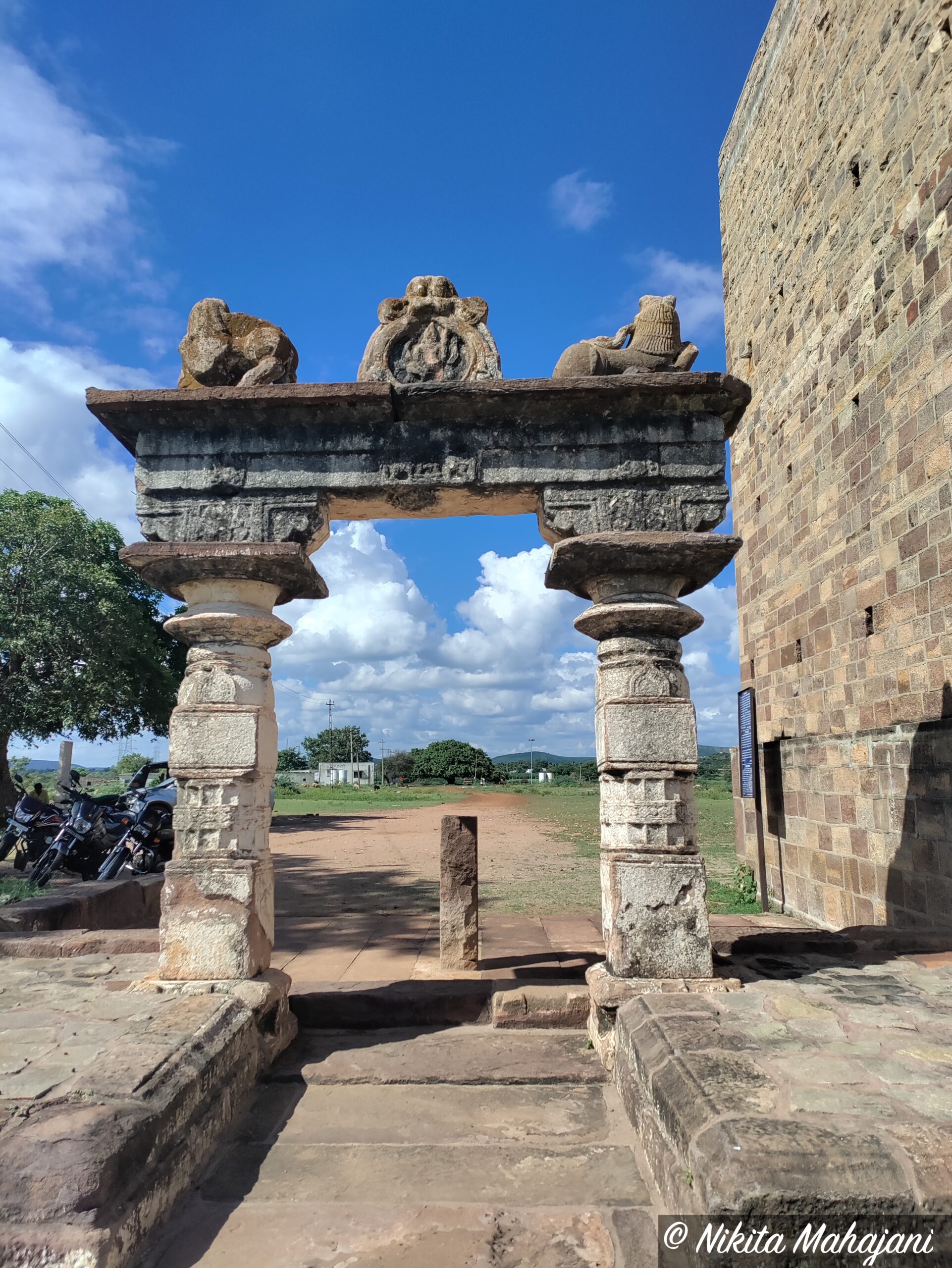
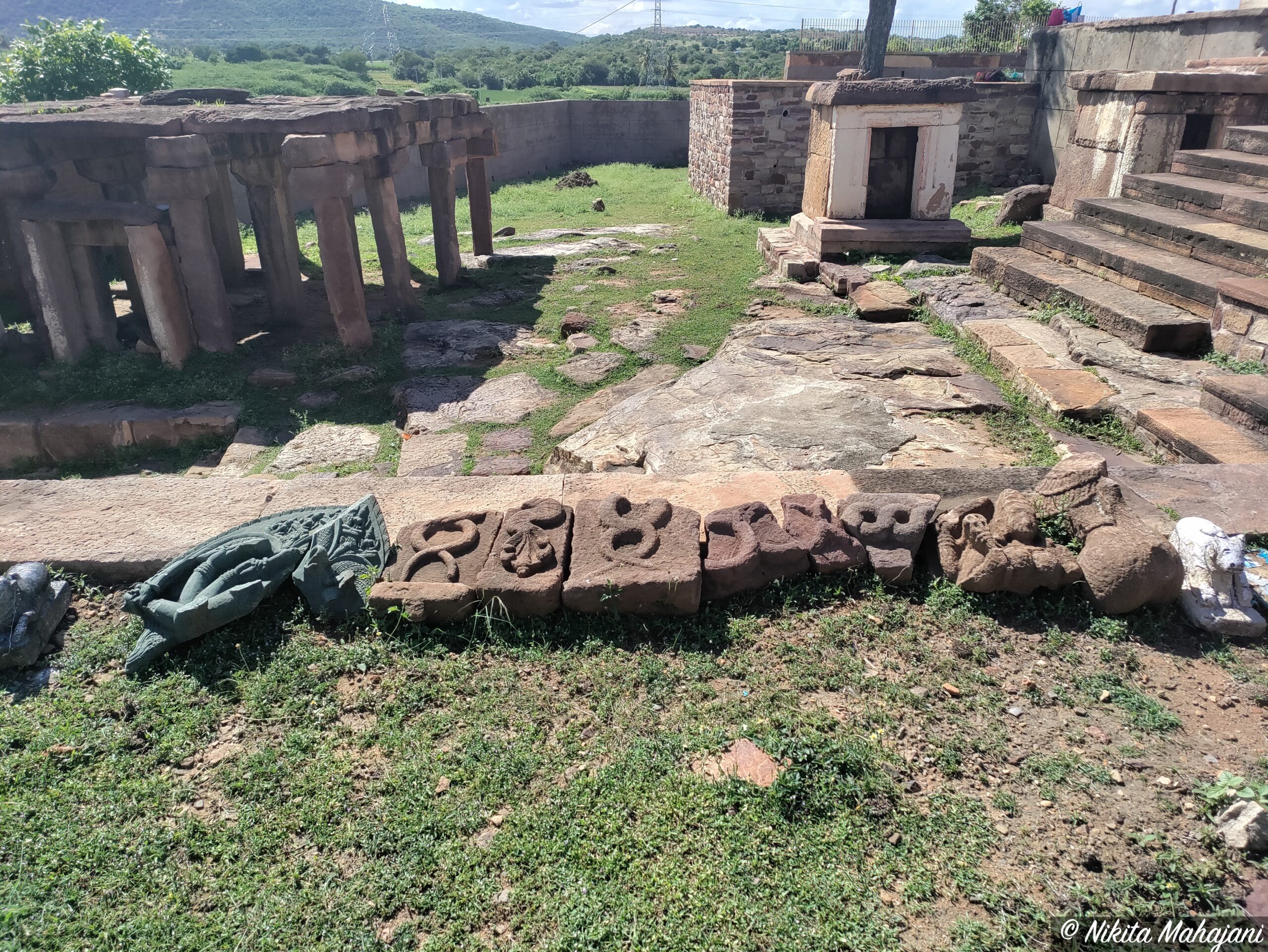
The temple complex at Aihole, including the Lad Khan Temple and Durga Temple, was magnificent, reflecting the architectural legacy of the Chalukyas. Both these temples are not pet friendly. There is a common entry gate and ticket for both these temples. On road paid parking is available. There are a lot of hawkers selling food items outside the temple. However there is no restaurants in this area.
Despite what its name suggests, the Durga Temple isn’t dedicated to Goddess Durga. The word ‘Durga’ here refers to a fort, as the temple was once part of a fortified complex. What makes this temple truly stand out is its unusual apsidal (semi-circular) structure, reminiscent of a Buddhist chaitya hall. This architectural form not only distinguishes it from typical Hindu temples but also reflects a fascinating blend of cultural and design influences.
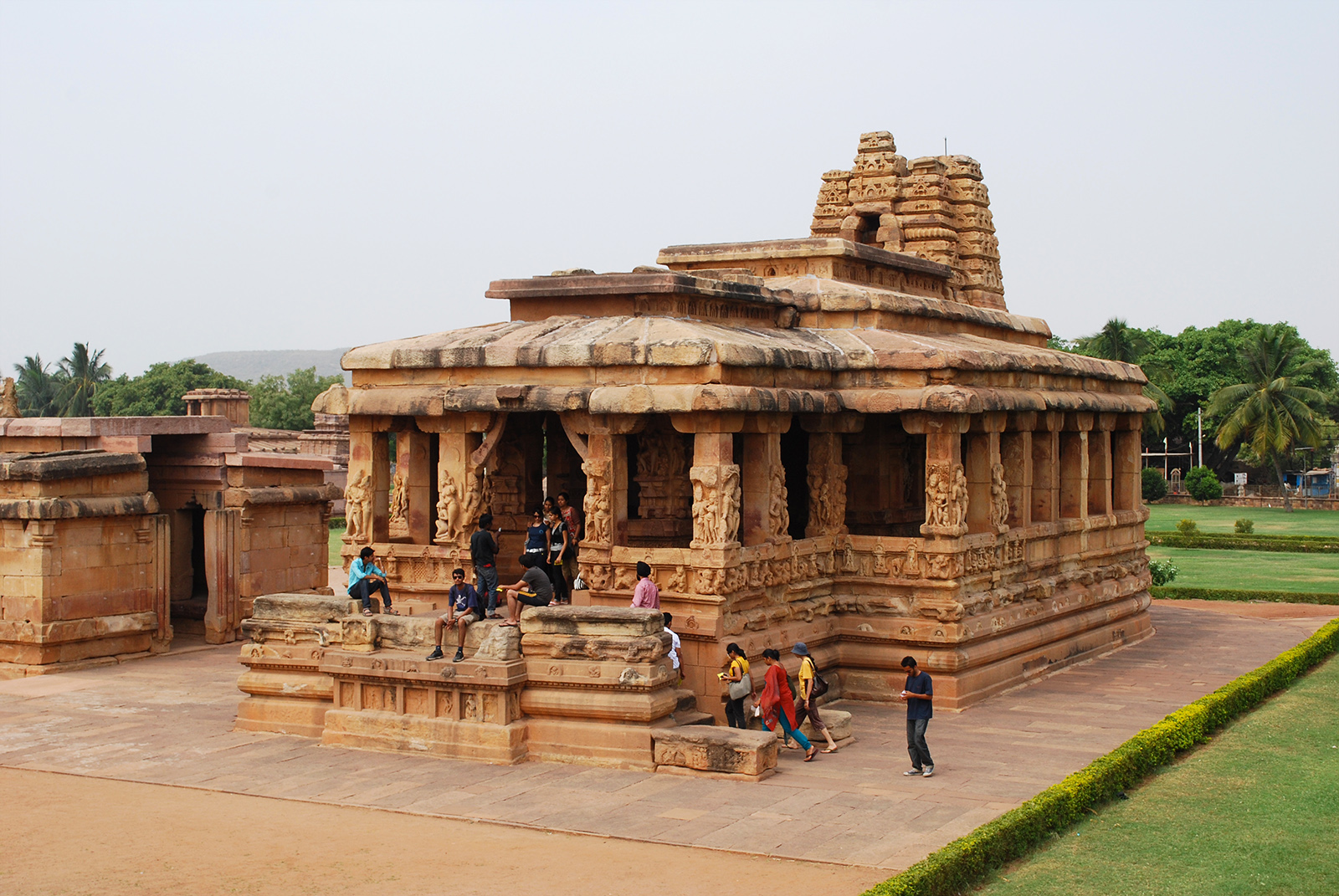
Source: Wikipedia
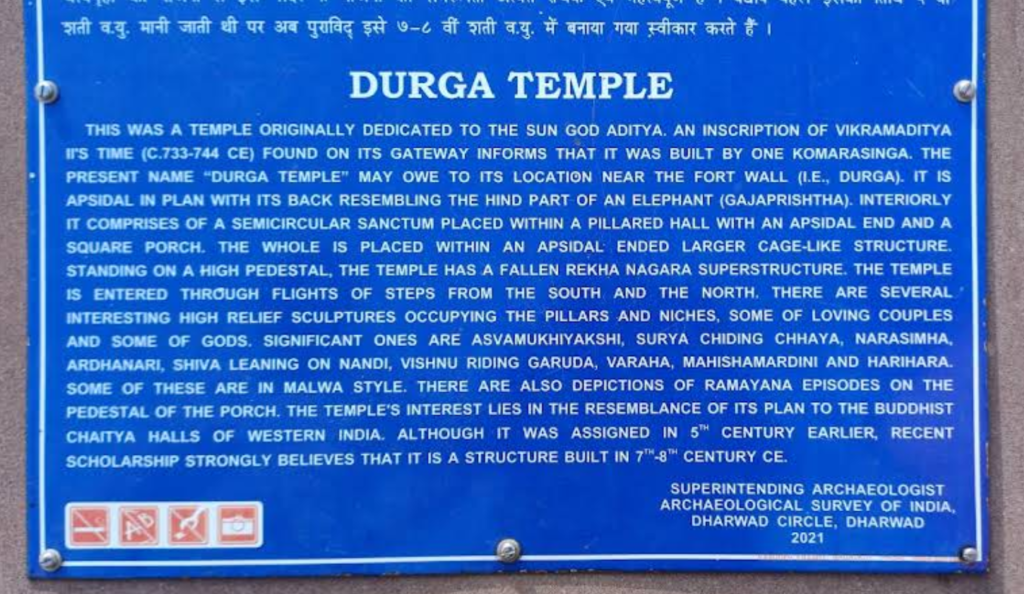
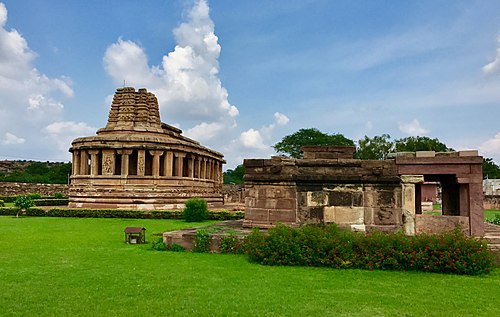
Source: Wikipedia
The next place that we visited was Ladkhan temple. The Lad Khan Temple, also known as the Chalukya Shiva Temple, is one of the oldest surviving Hindu temples and a true gem among the monuments at Aihole, Karnataka. Although once believed to date back to the 7th or 8th century, scholars now place its origins around the 5th century. Located just south of the Durga Temple, it reflects the transition from wooden to stone architecture, with its roof and layout echoing early timber construction styles.
The temple features a sanctum with a mandapa (hall) in front, along with a covered passage for ritual circumambulation—an element seen in some of the earliest temple designs. The mukha mandapa has 12 intricately carved pillars, while the sabha mandapa leads into the main hall (maha mandapa), where pillars are arranged in two concentric squares. Delicate floral motifs adorn the walls, and northern-style lattice windows add to the charm. Above the hall, a smaller second sanctum faces the main shrine, with its outer walls richly carved with deities and symbols.
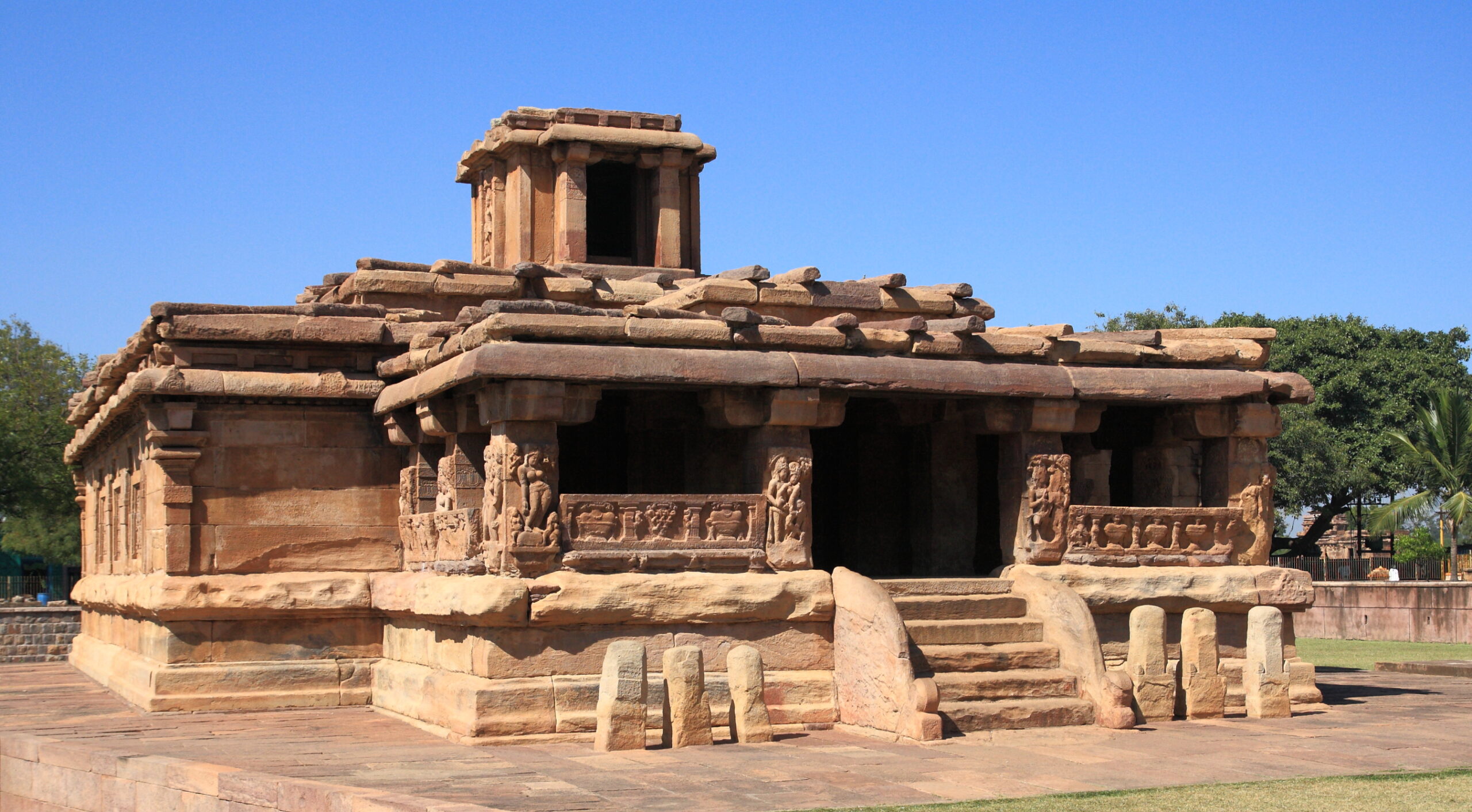
Source: Wikipedia
We also explored a nearby step well (Devalaya Pushkarini) which is completely pet friendly. The Devalay Pushkarini lies in the premises of Jyotirlinga Temple Group and Shree Mallikarjuna Temple
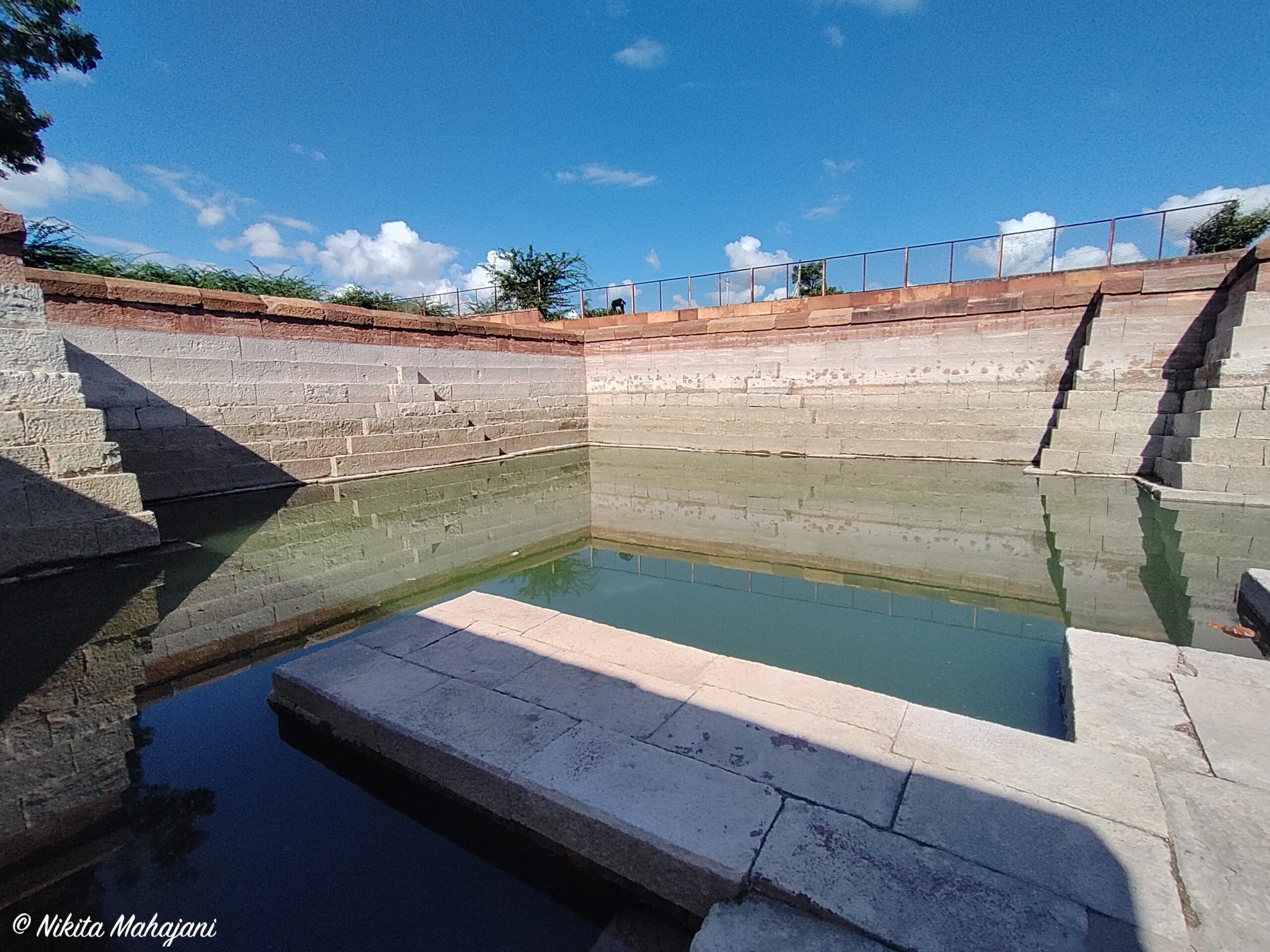
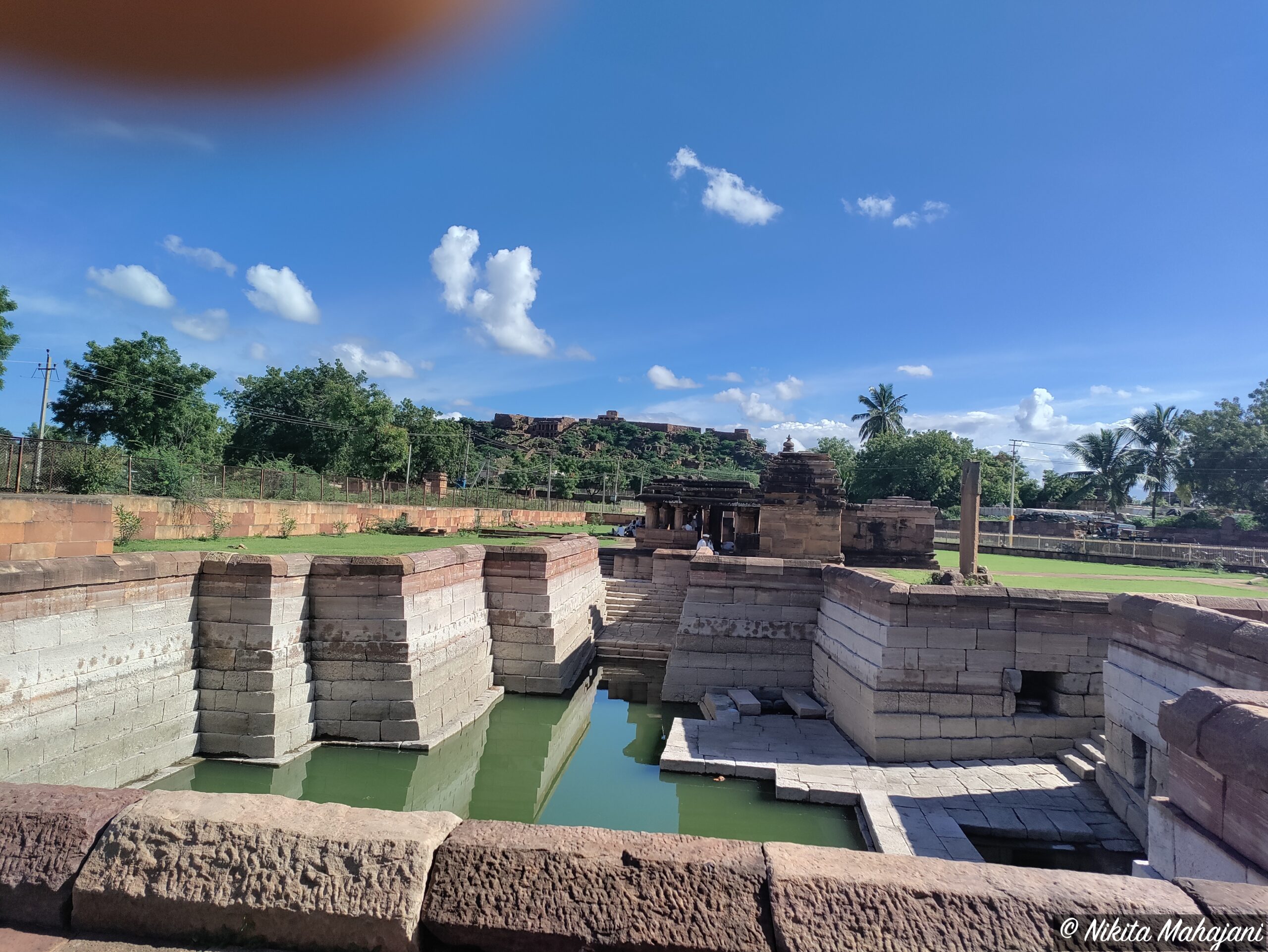
We also visited the Chikki temple complex. It is a miniature version or a replica of Durga Temple. It is adjacent to the parking area of Durga temple. If you are not comfortable in crowded places, skip Durga temple and visit the Chikki temple complex.
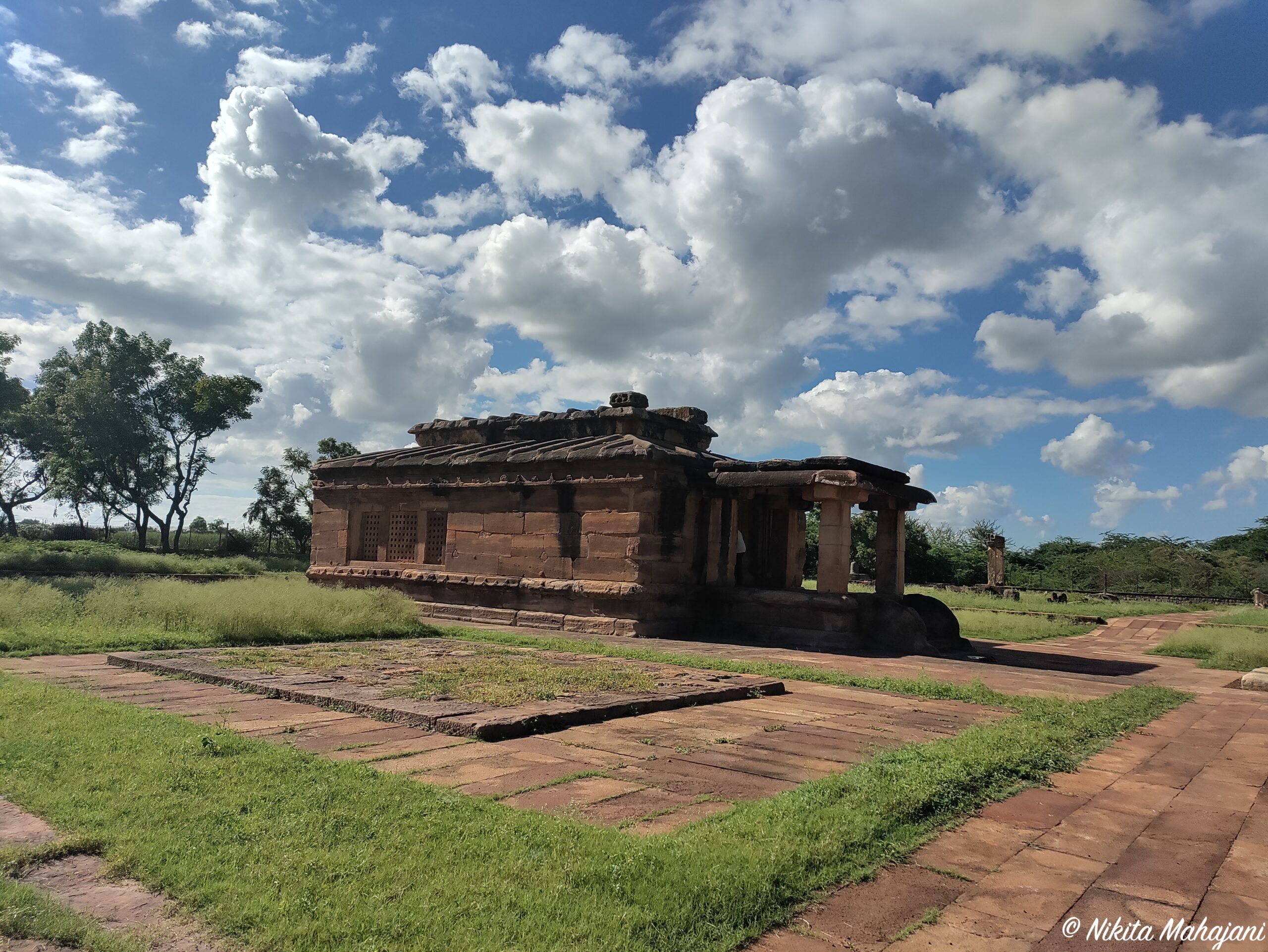
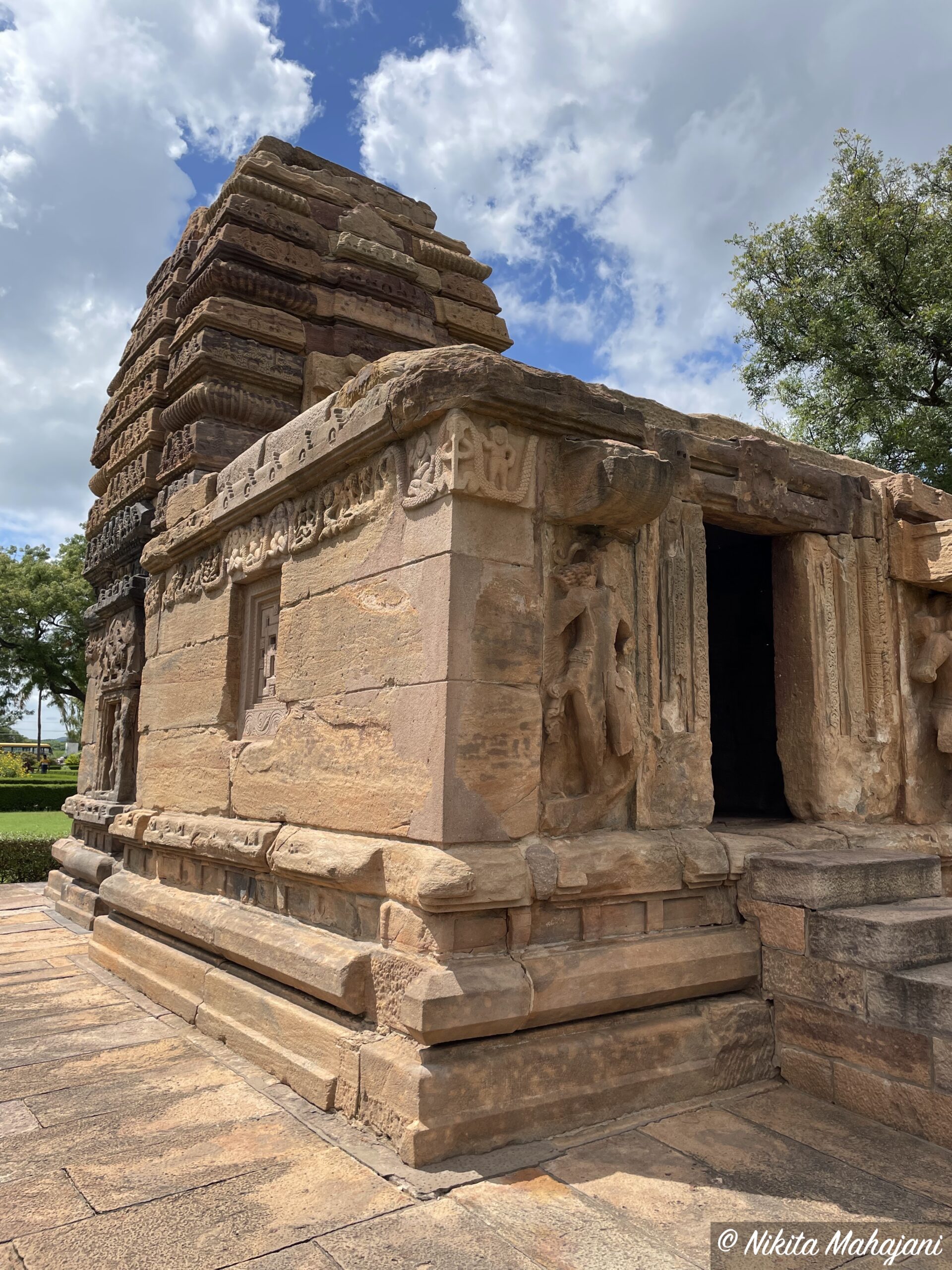
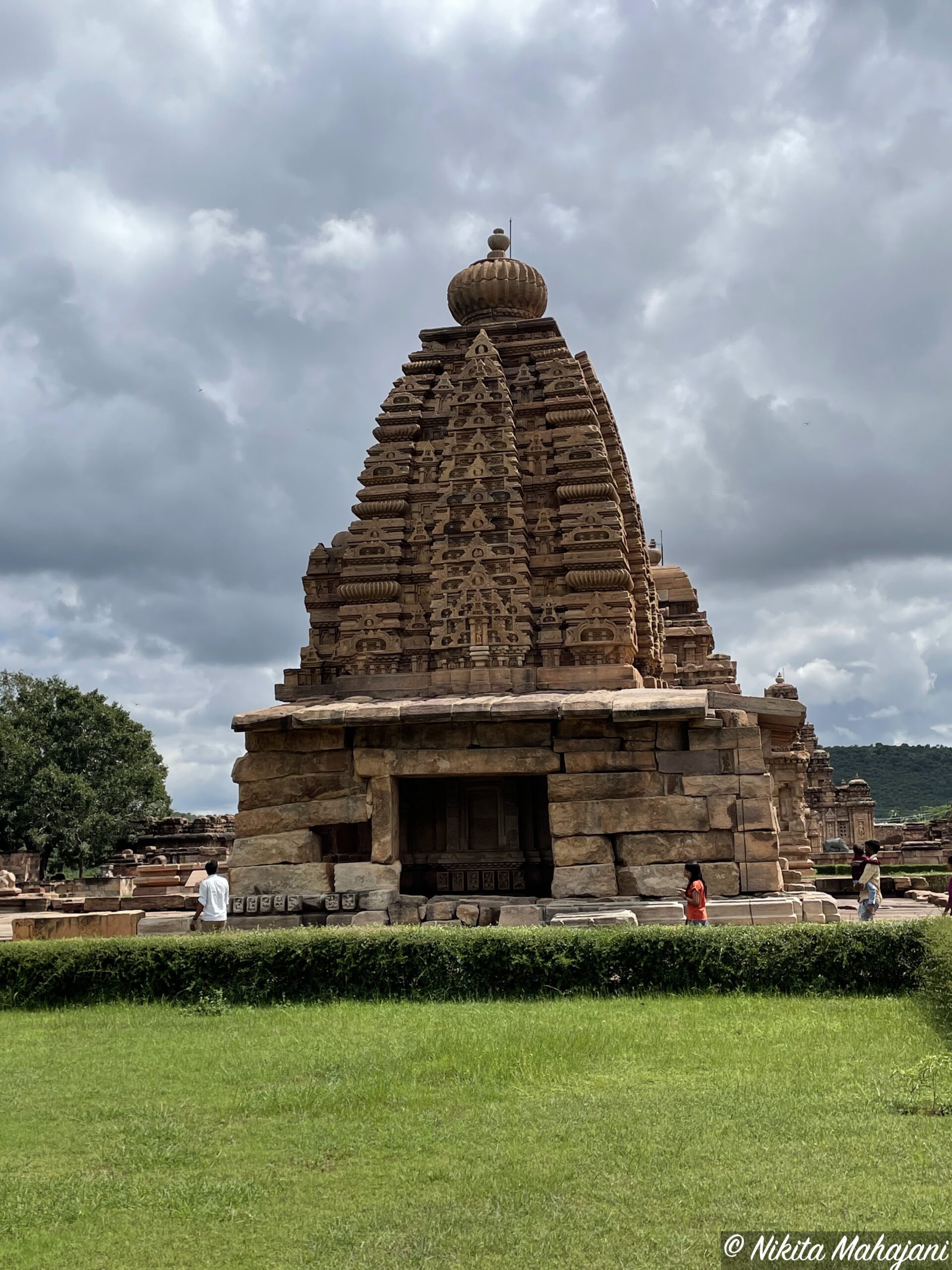
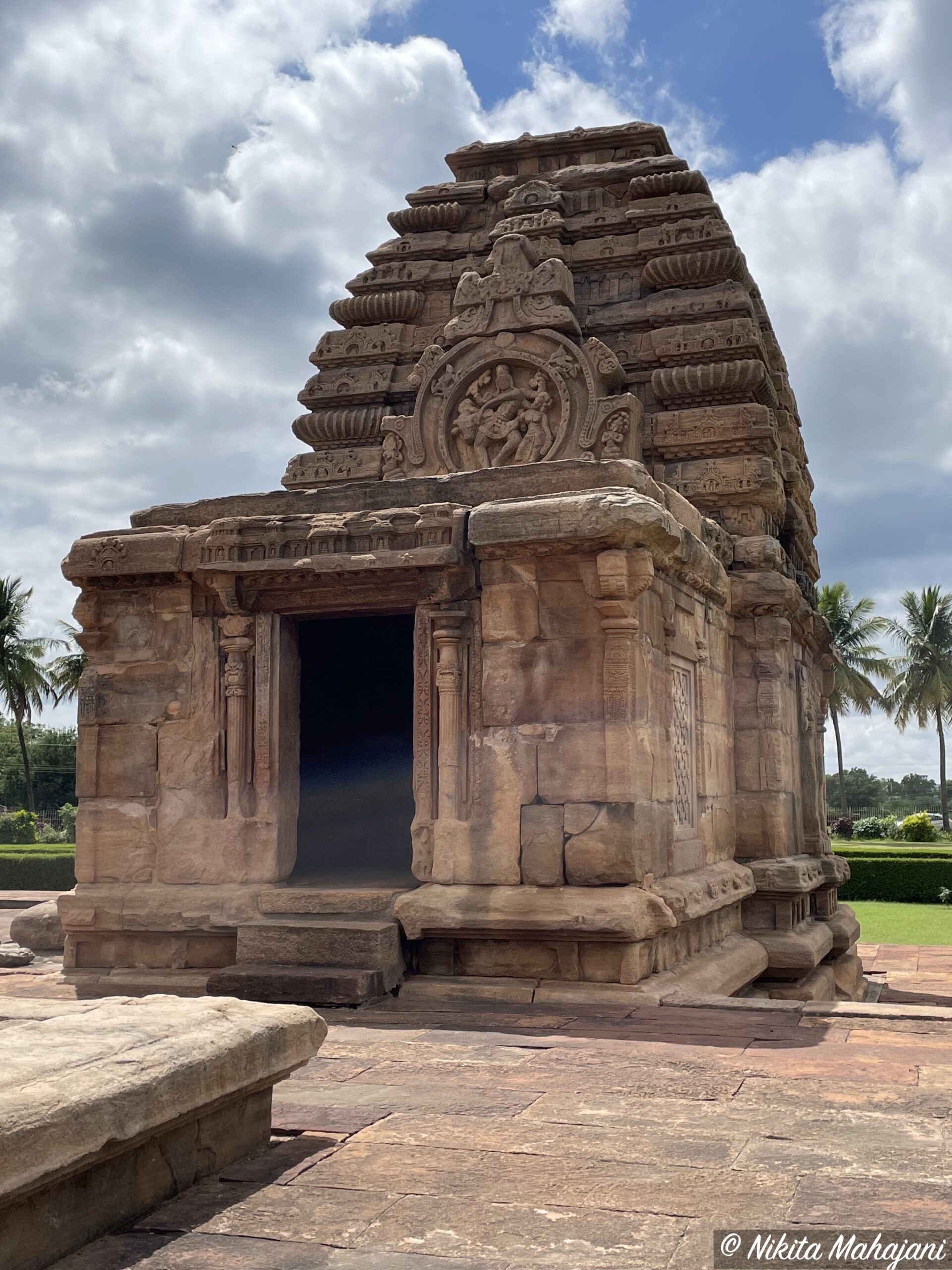
Our day ended with a visit to the revered Dakshina Kaashi Shri Mahaakuteshwara Gudi. A stunning example of Chalukyan architecture, the Mahakuteshwara Temple—also revered as Dakshina Kashi—stands as a testament to the grandeur of a bygone era. Just 8 km from Badami, this serene temple complex is often overlooked by travelers, largely due to lack of awareness. The temple houses a sacred pond (Kalyani) and a Ganapati shrine beside it, though many now use the pond more like a swimming spot than a holy one. Inside, the Navagraha deities are depicted with their vahanas and consorts, and the Shiva linga is polished to a mirror-like shine. The temple grounds are tranquil, attracting steady footfall from devotees and tourists alike. At the entrance, two beautifully crafted wooden chariots add to the charm and heritage of the site. After this, we returned back to our Hotel.
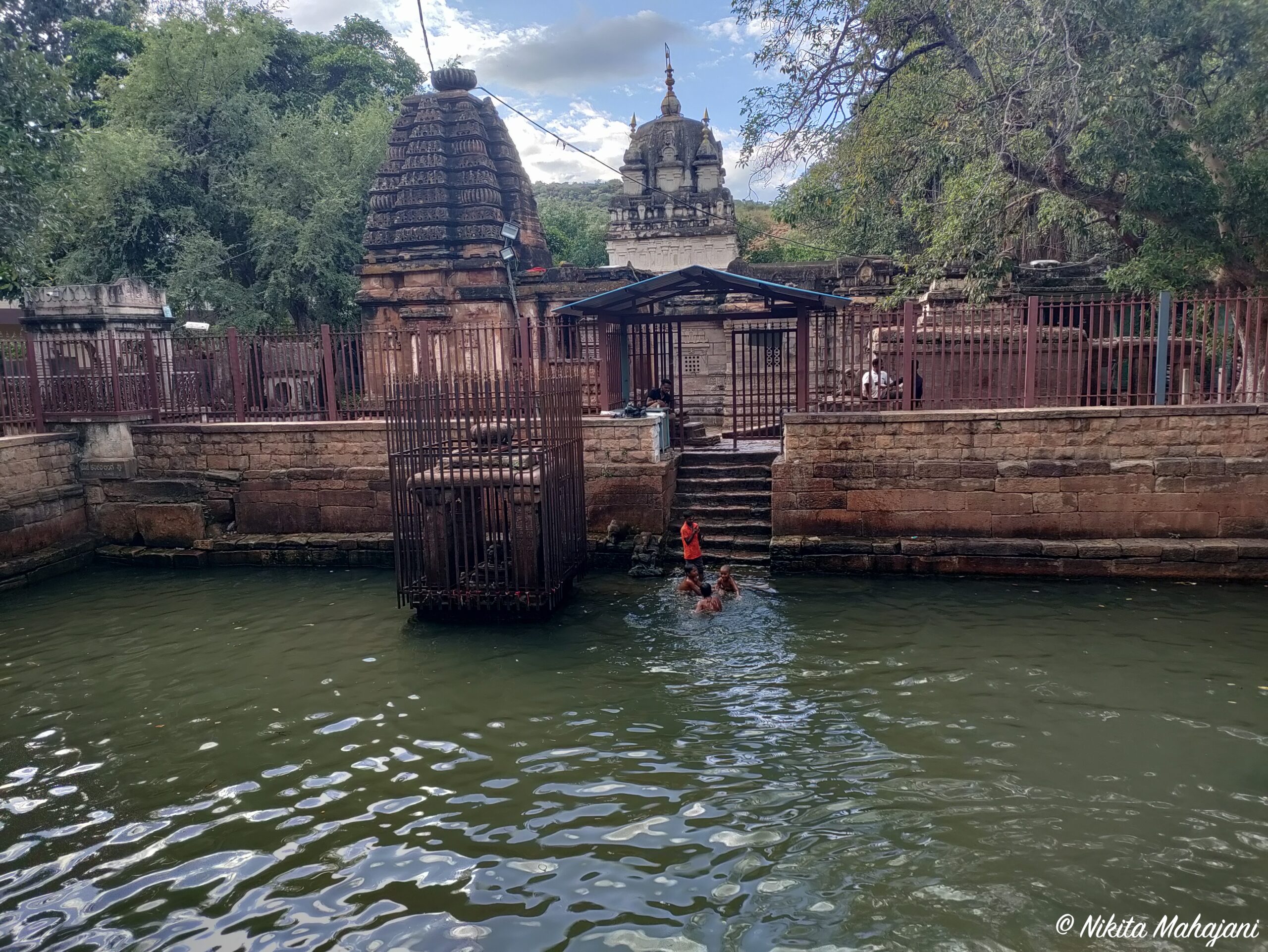
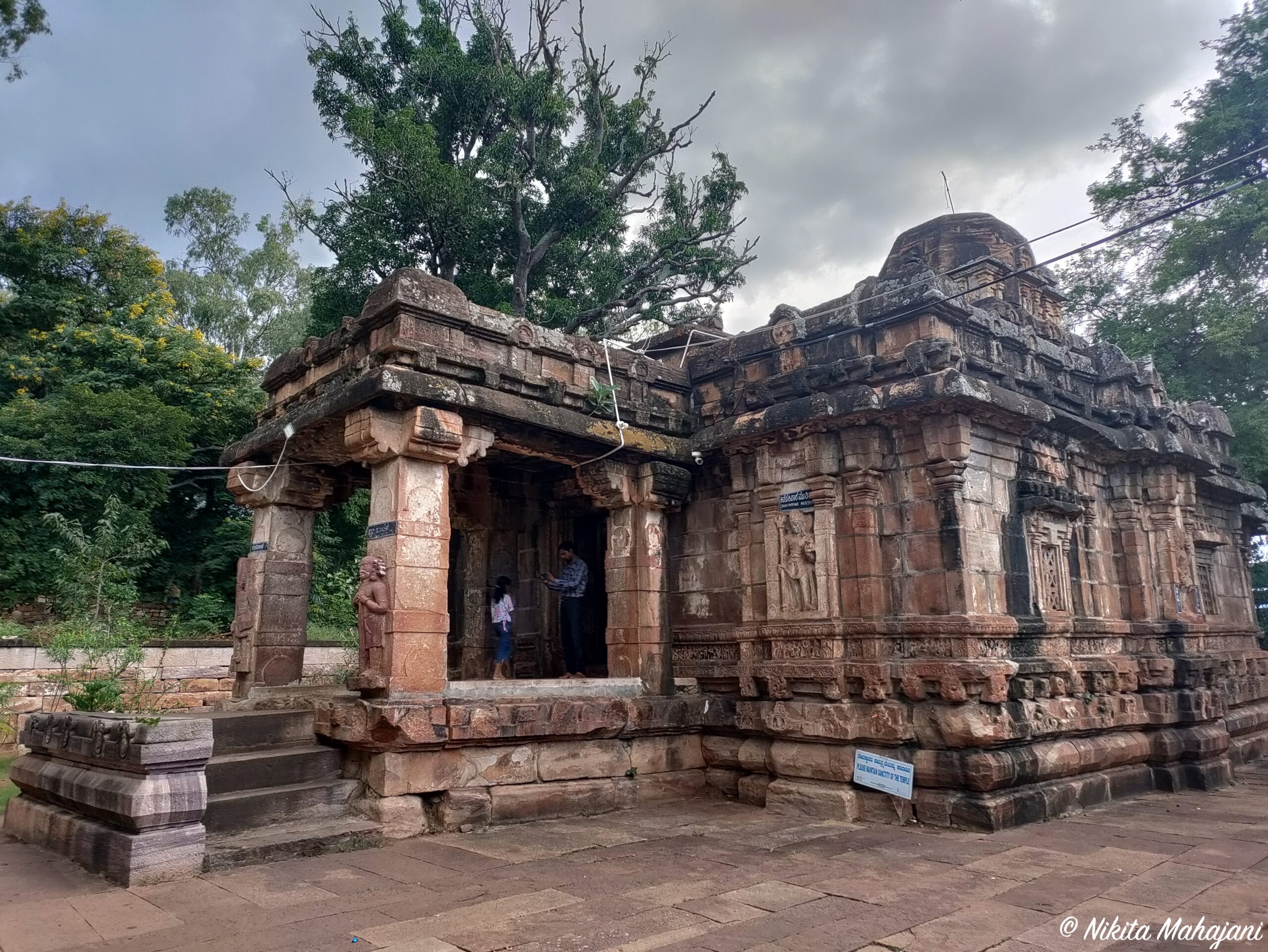
To read the next blog on Hampi-Badami Day-3 click here
Where did we eat ?
Hotel Sadguru pure veg, Wadhe, Pune-Satara road
Amar Only veg, Karnataka
Sri Veerabhadreshwar Lingayat Khanavali
Special Tea & Coffee, Hampi
Hampi Paradise, Hampi
A1 Hotel Raj, Hubballi
Udupi Grand Family restaurant, Nipani
Hotel Sadguru, Satara
Where did we stay ?
Hotel Badami Court
Goan corner / Zostel Gangavathi
Orchard Resort, Belagavi
